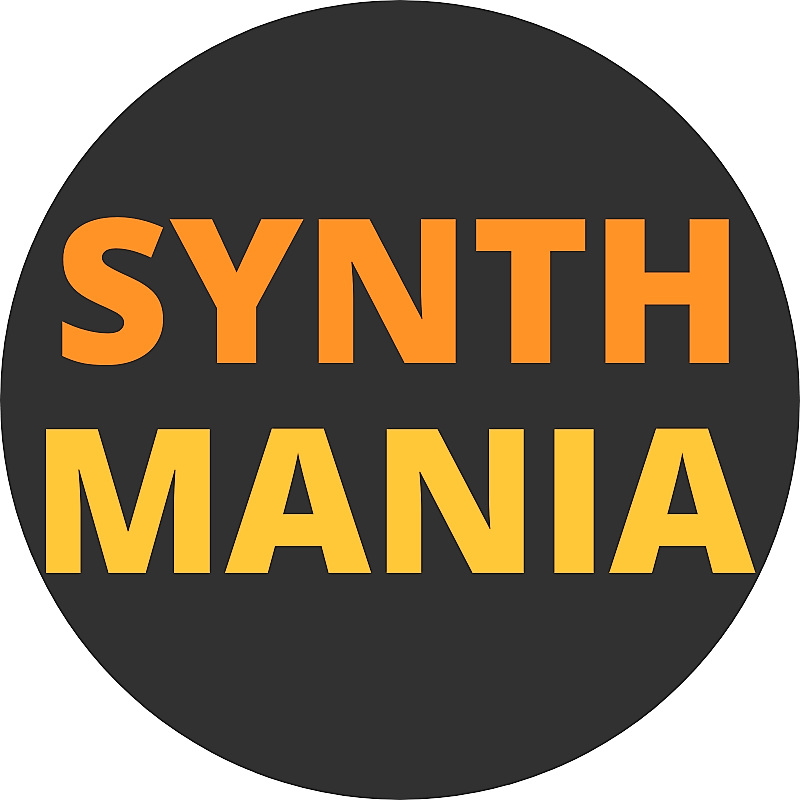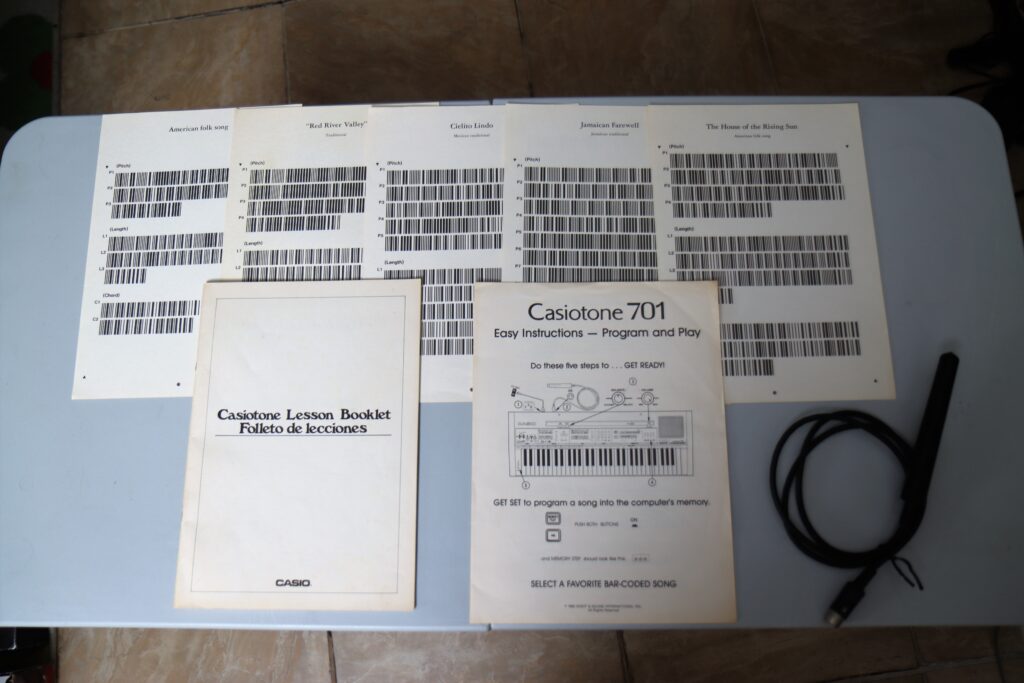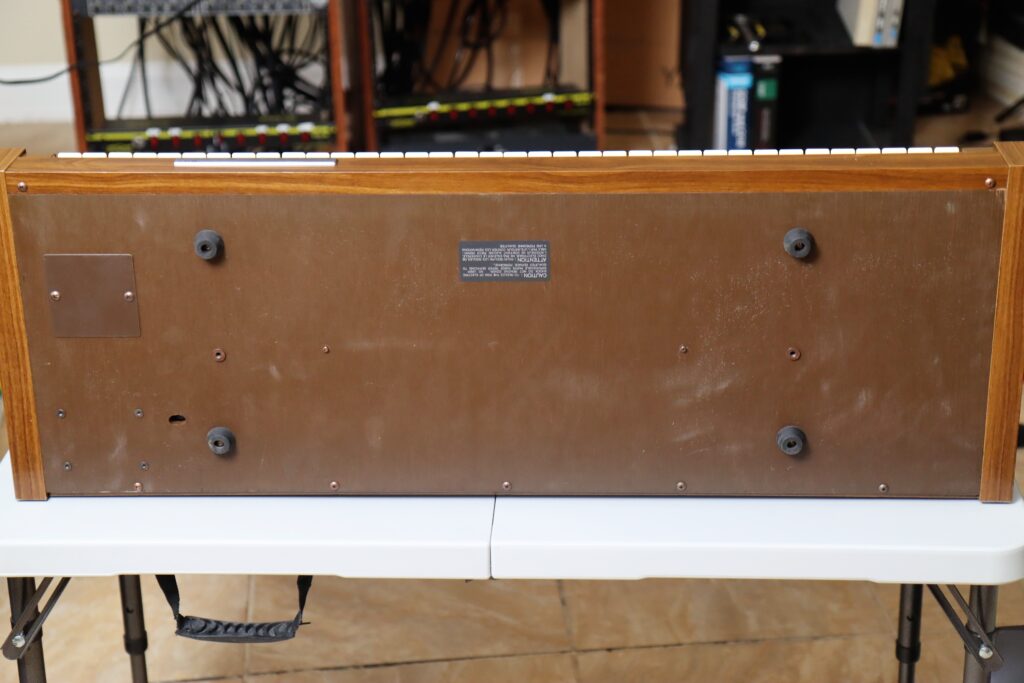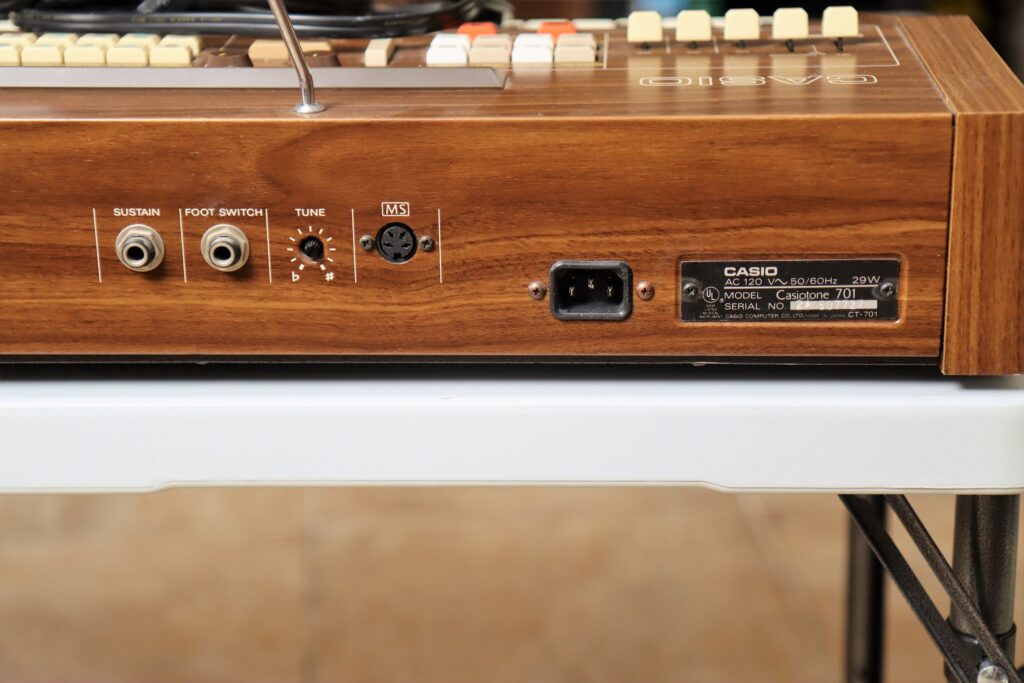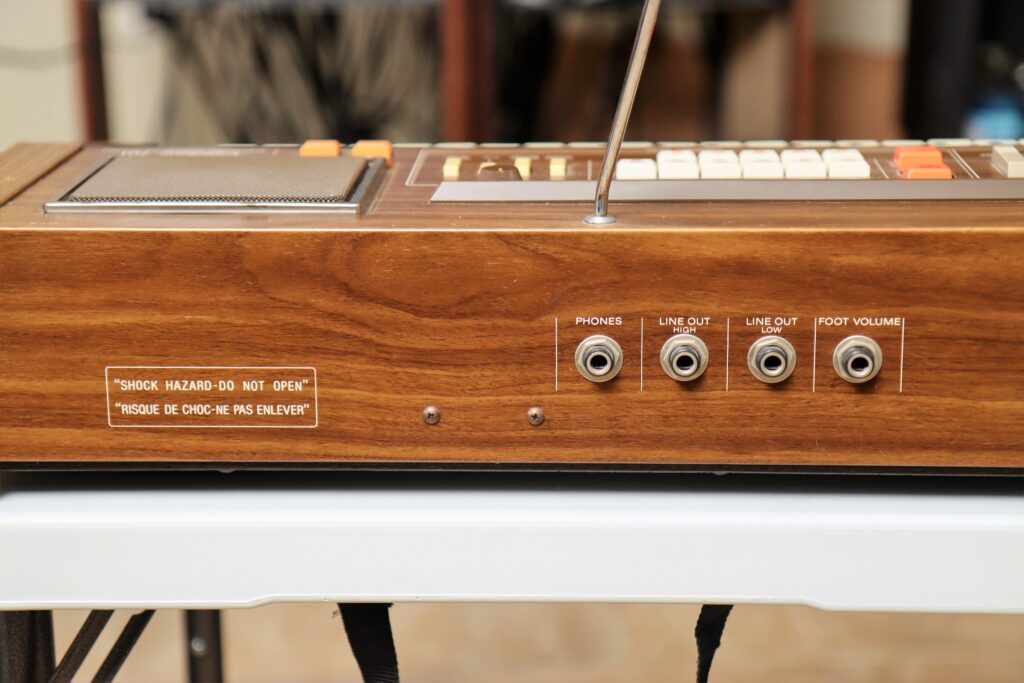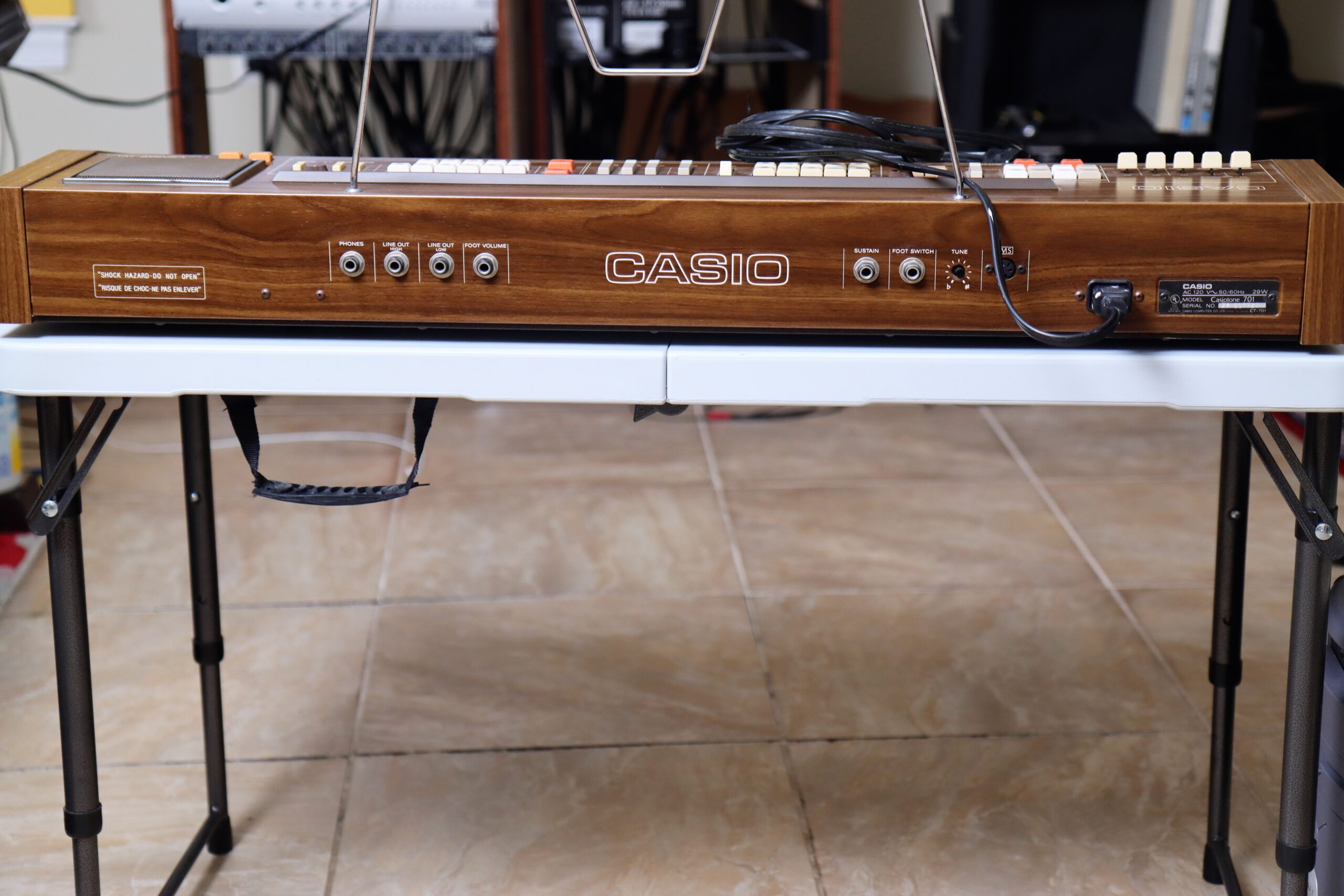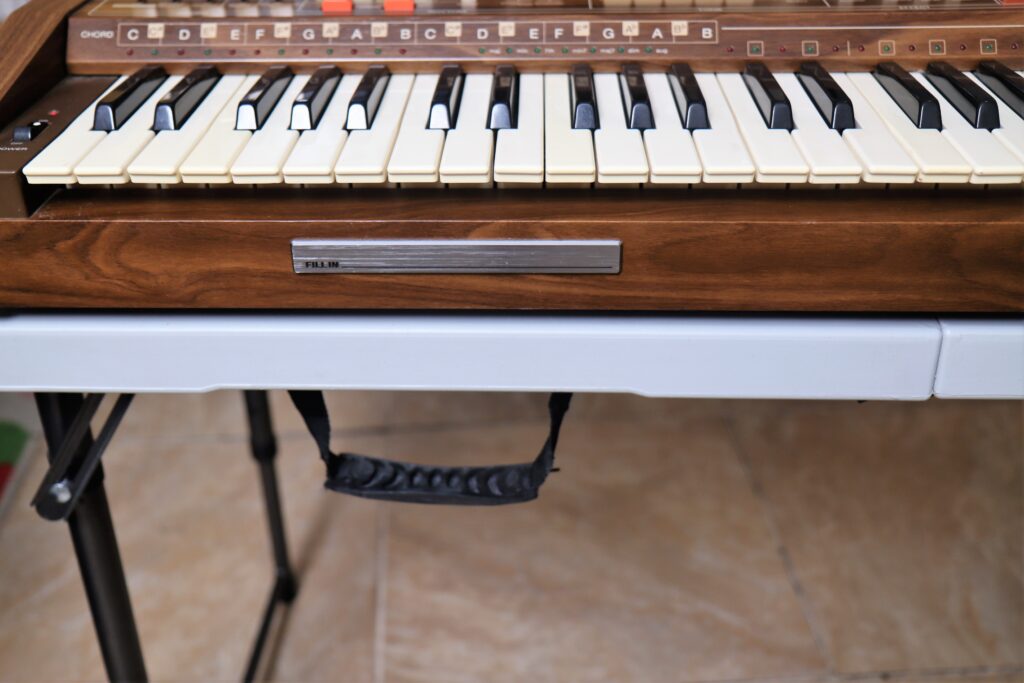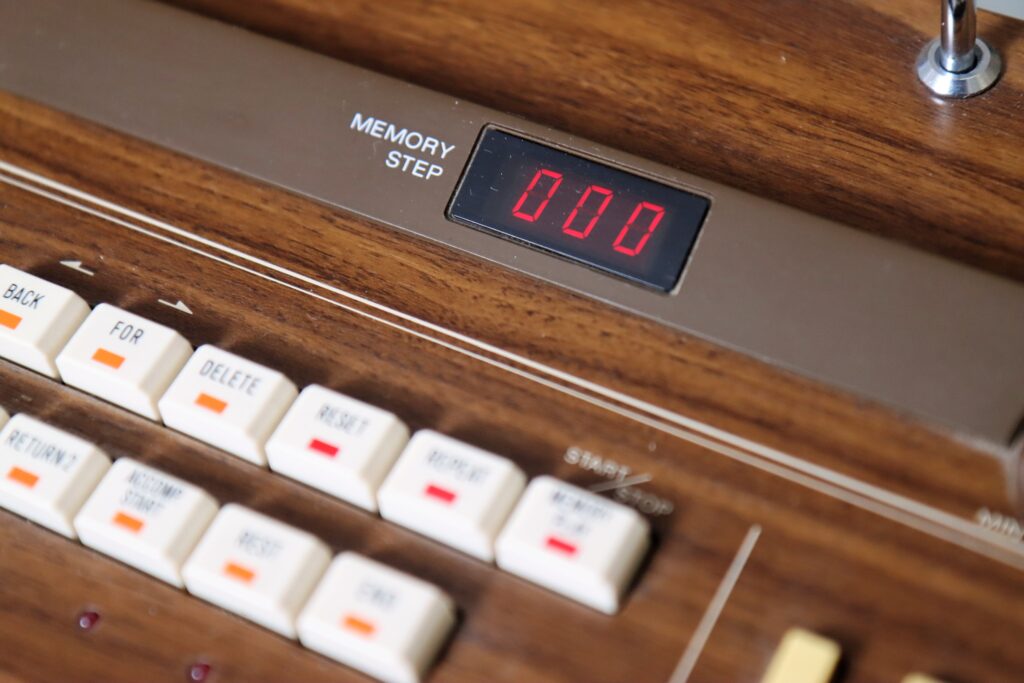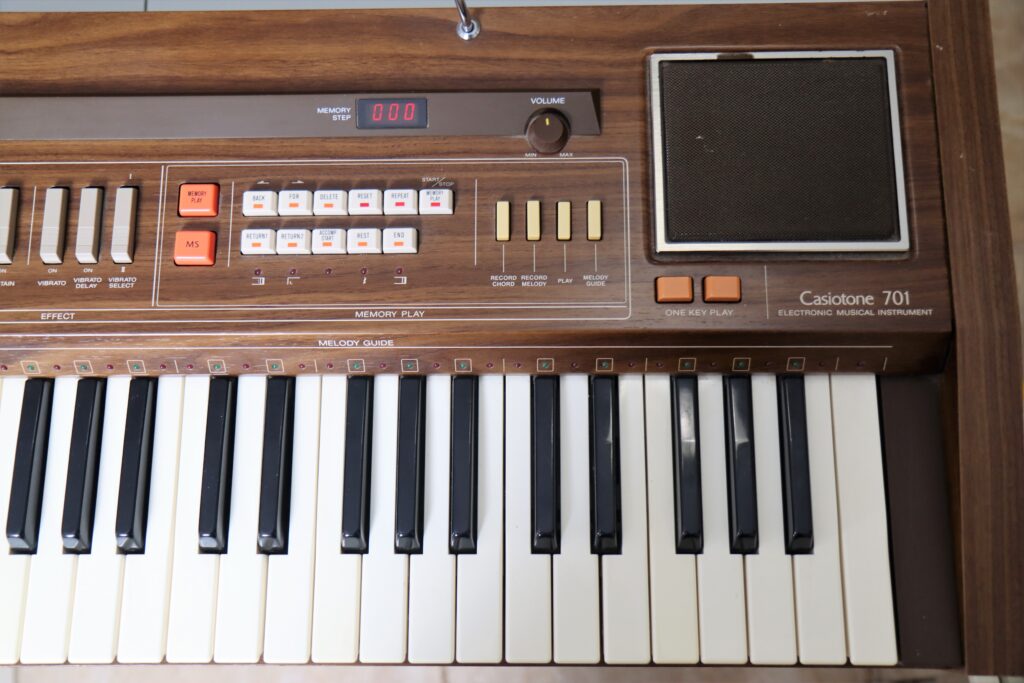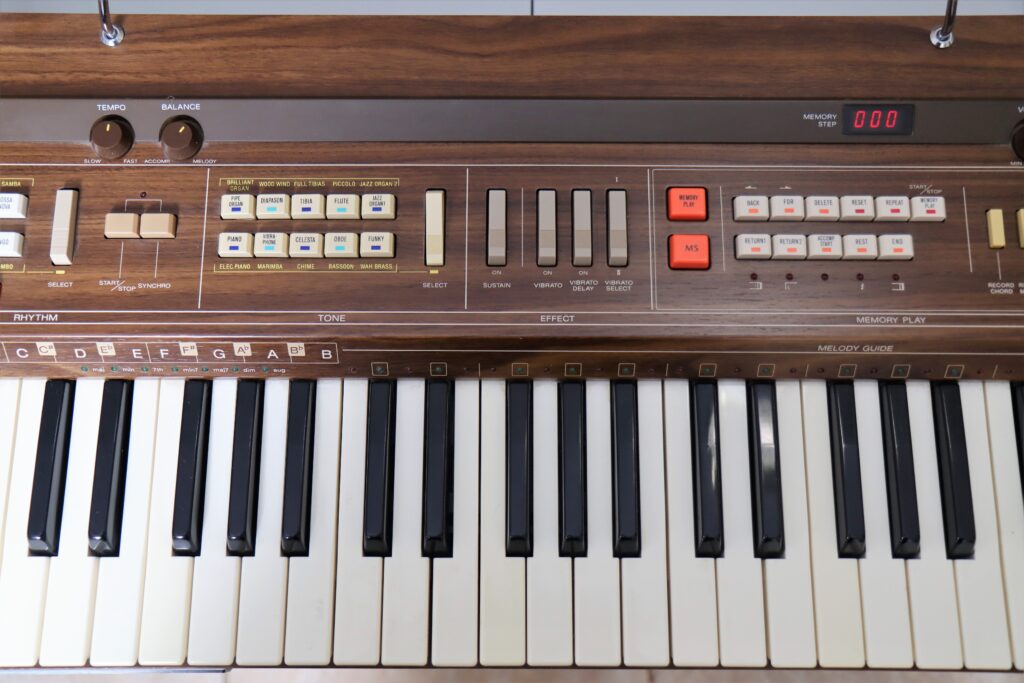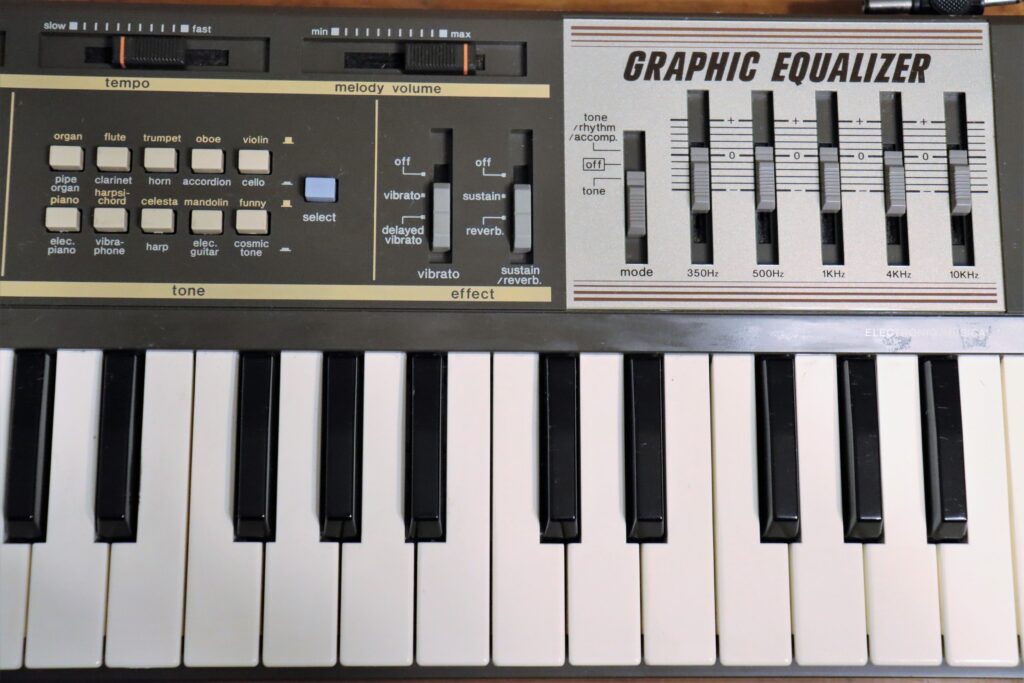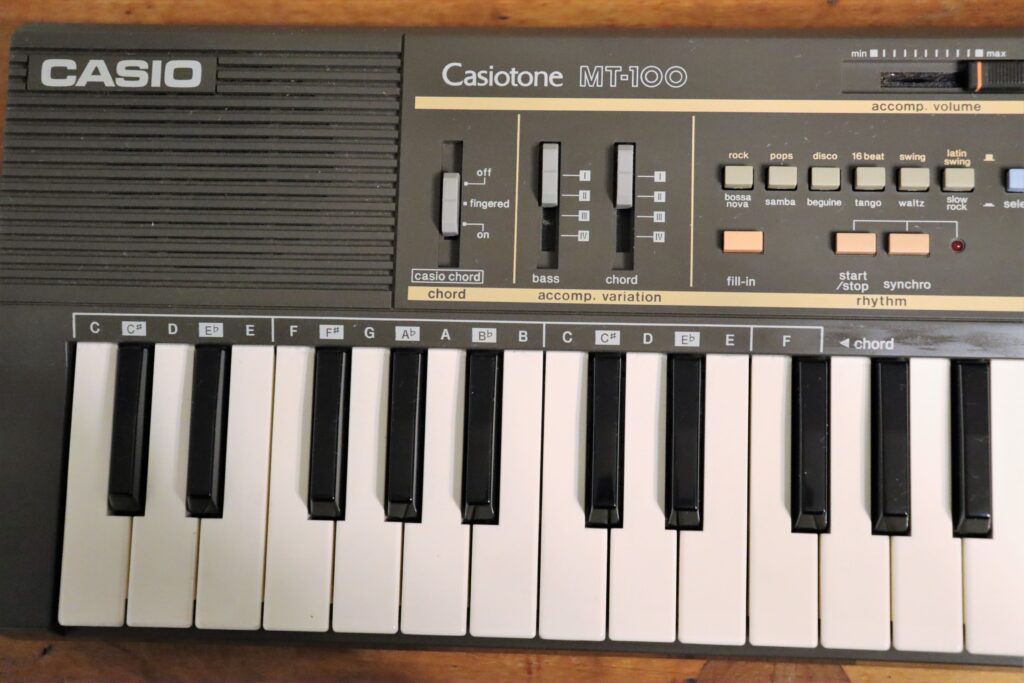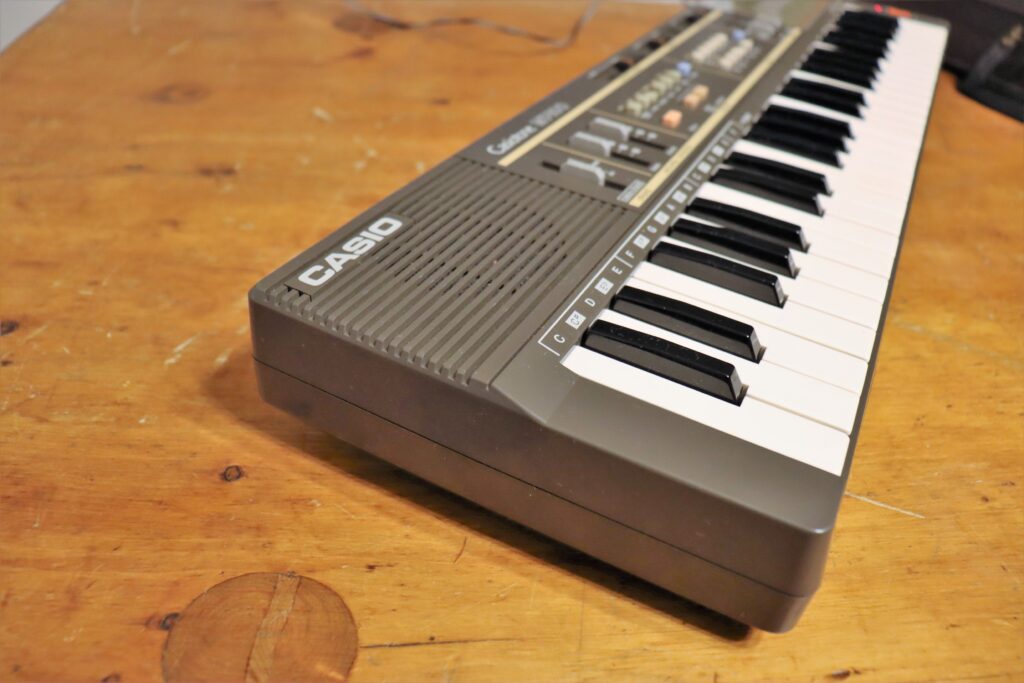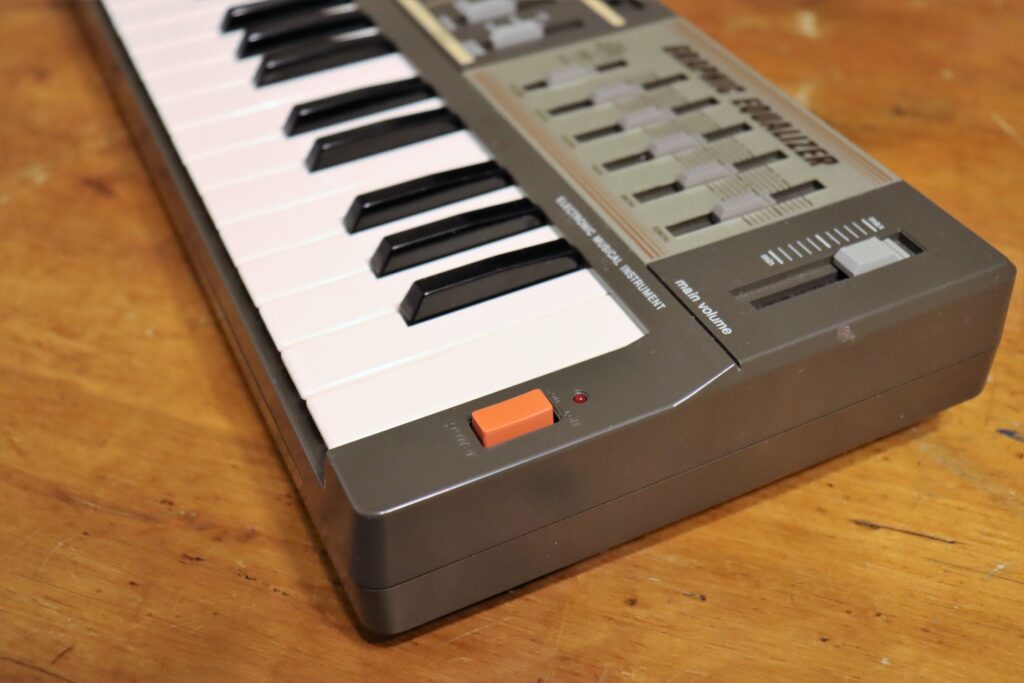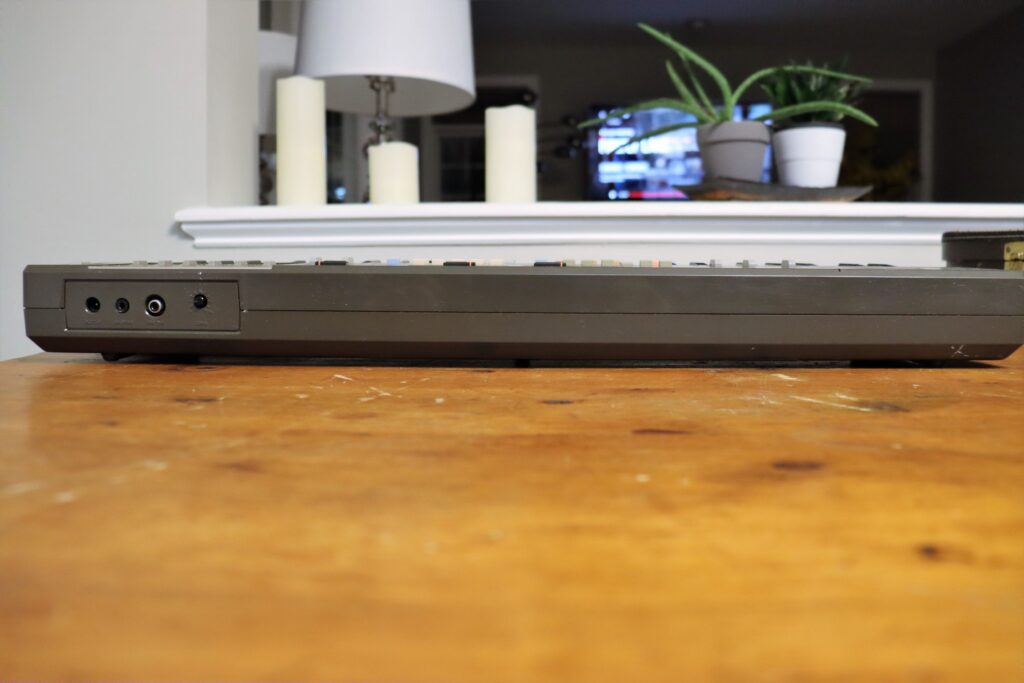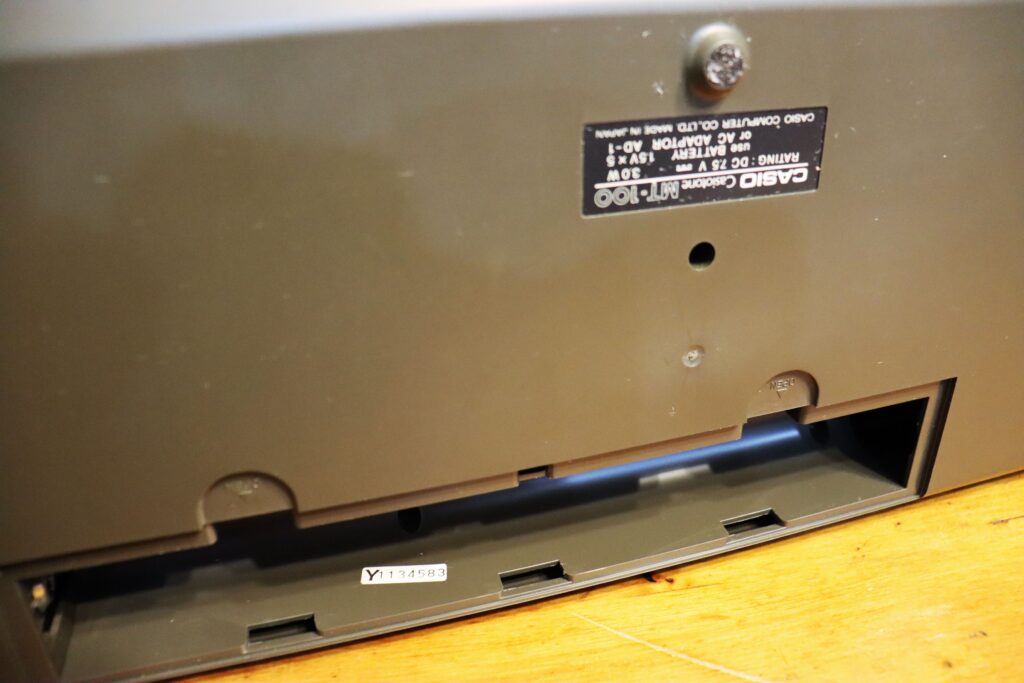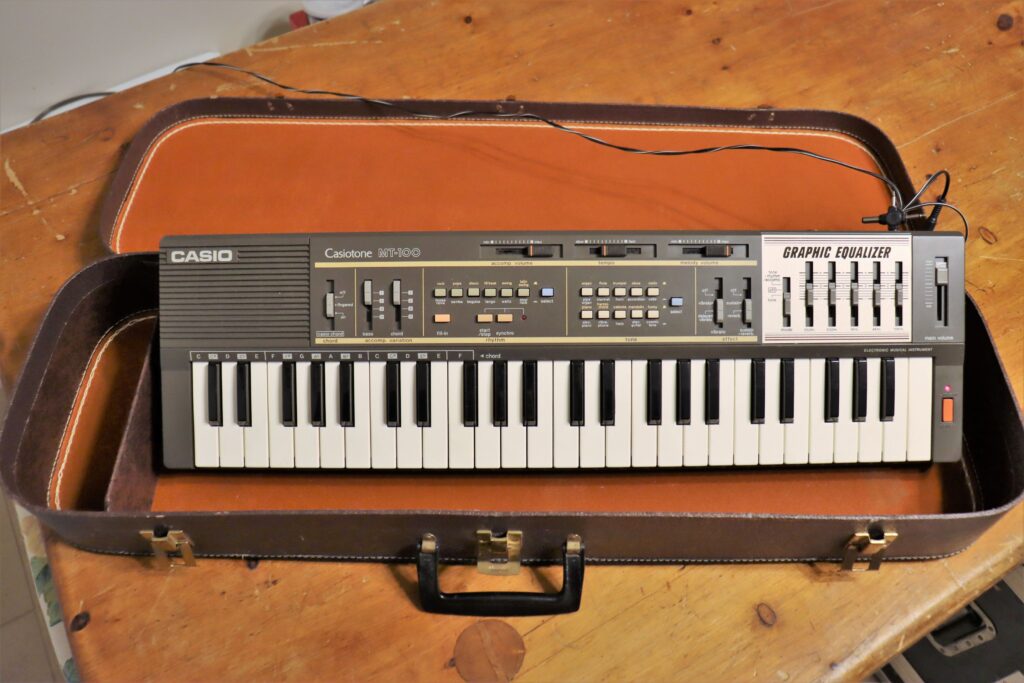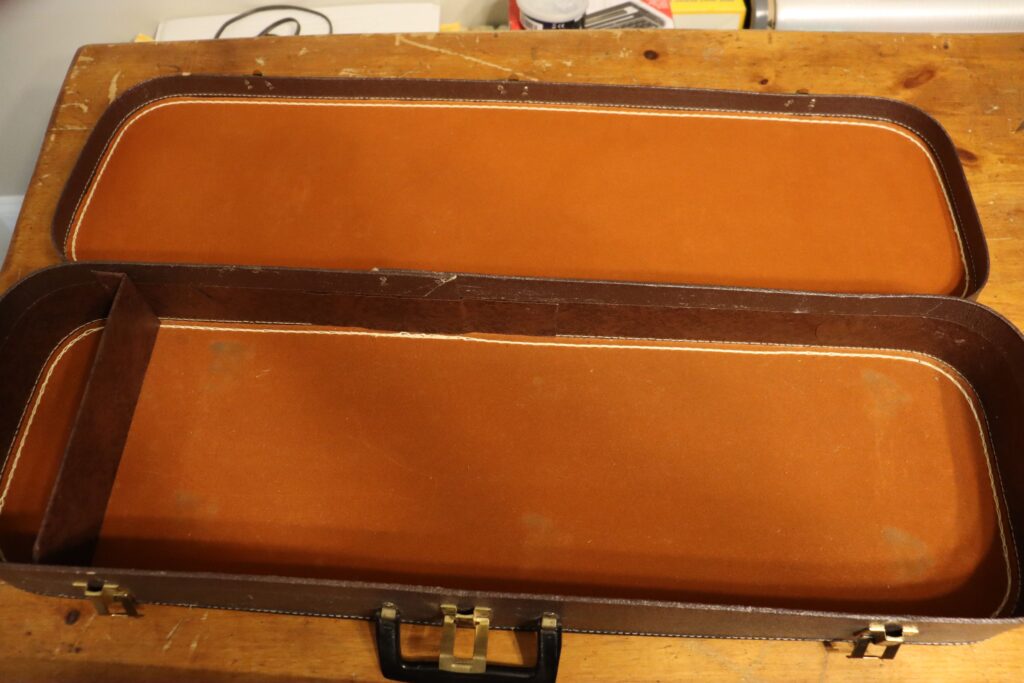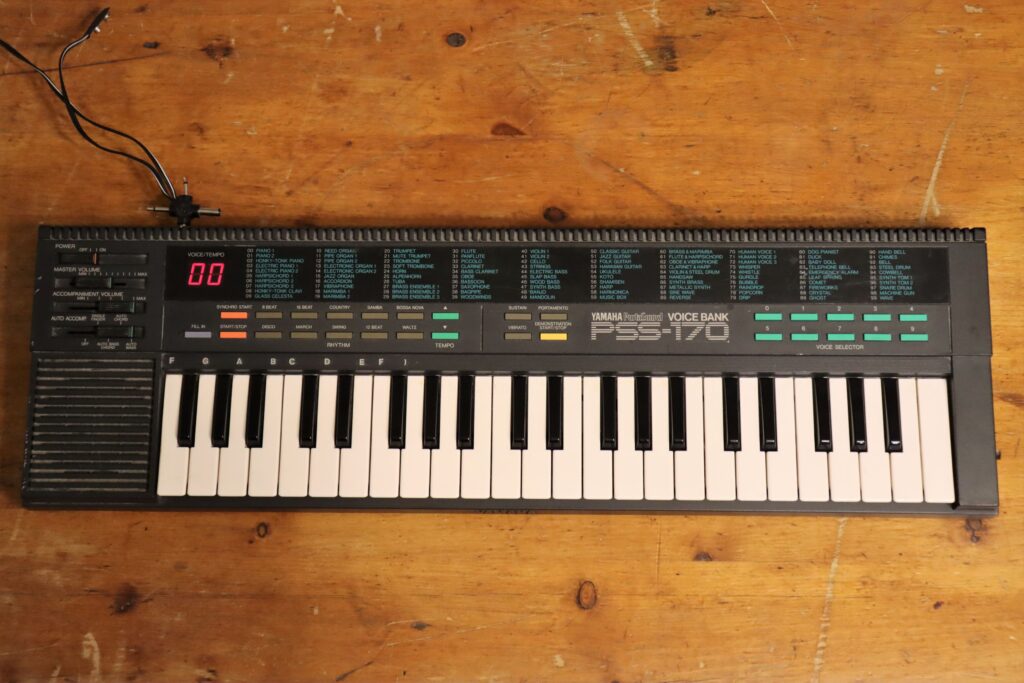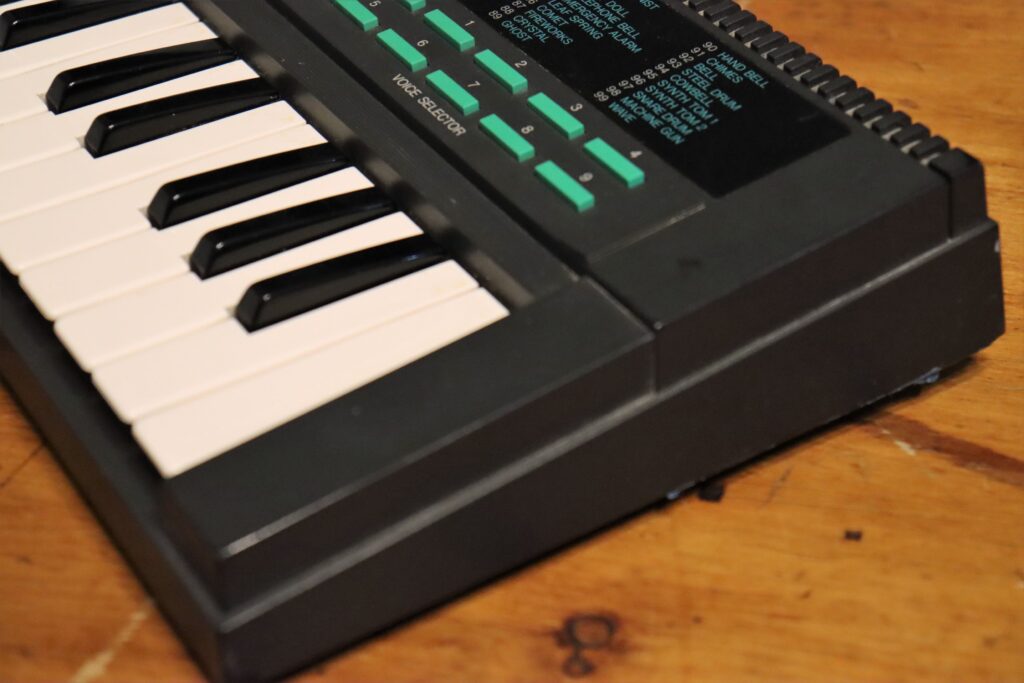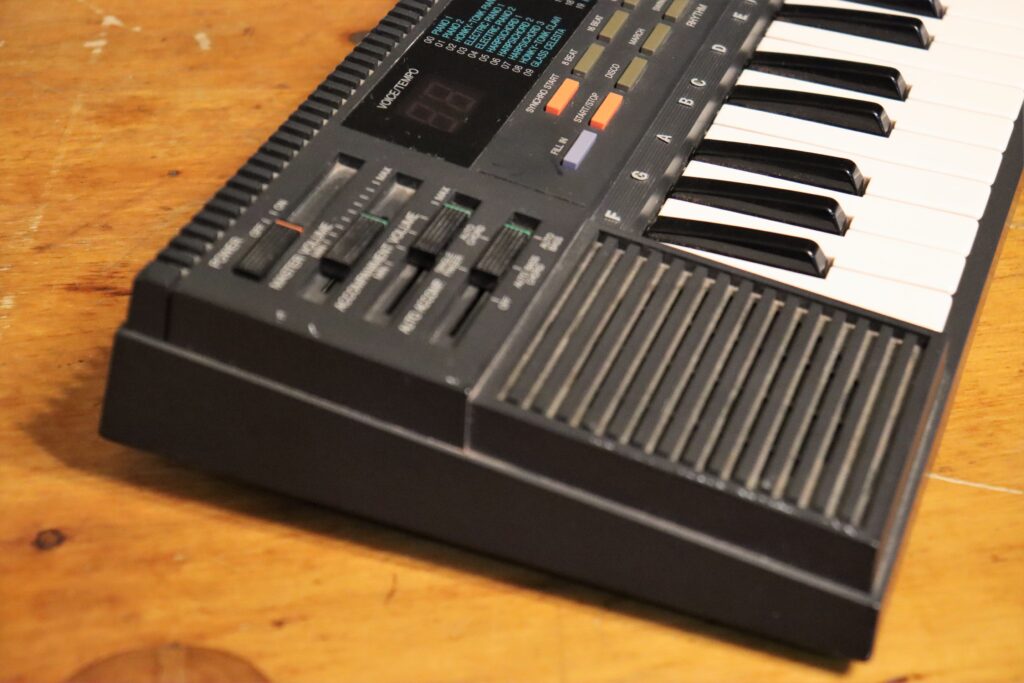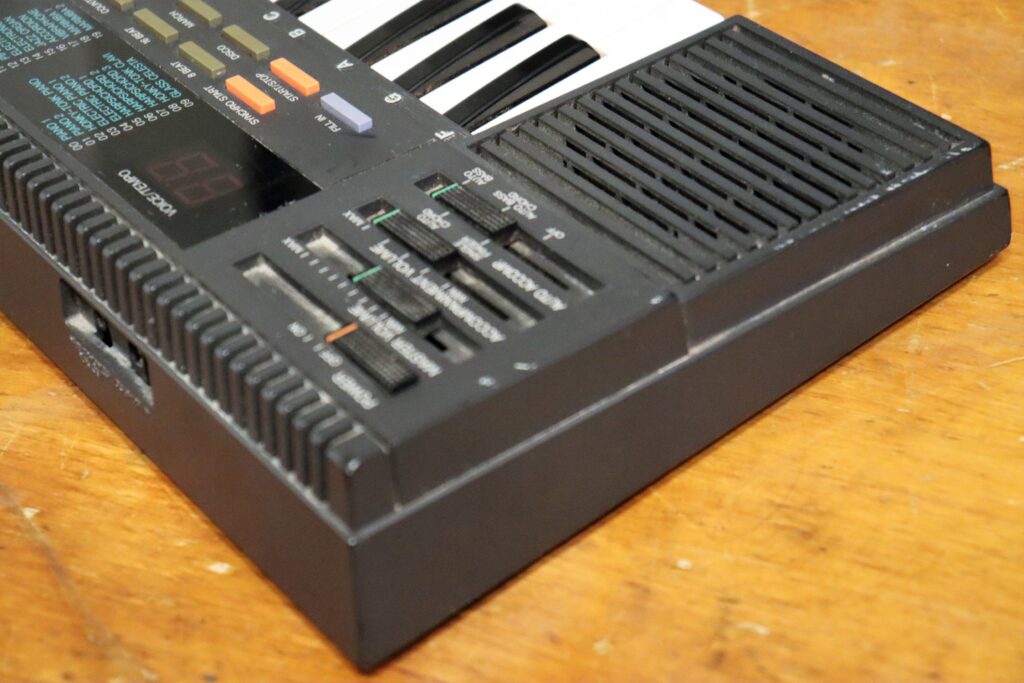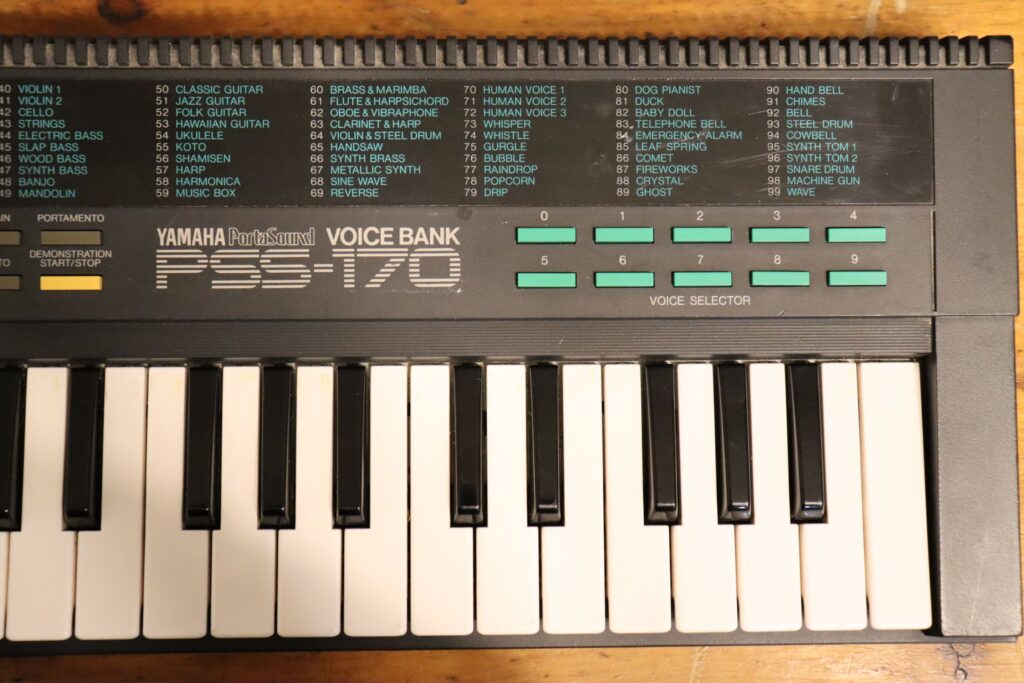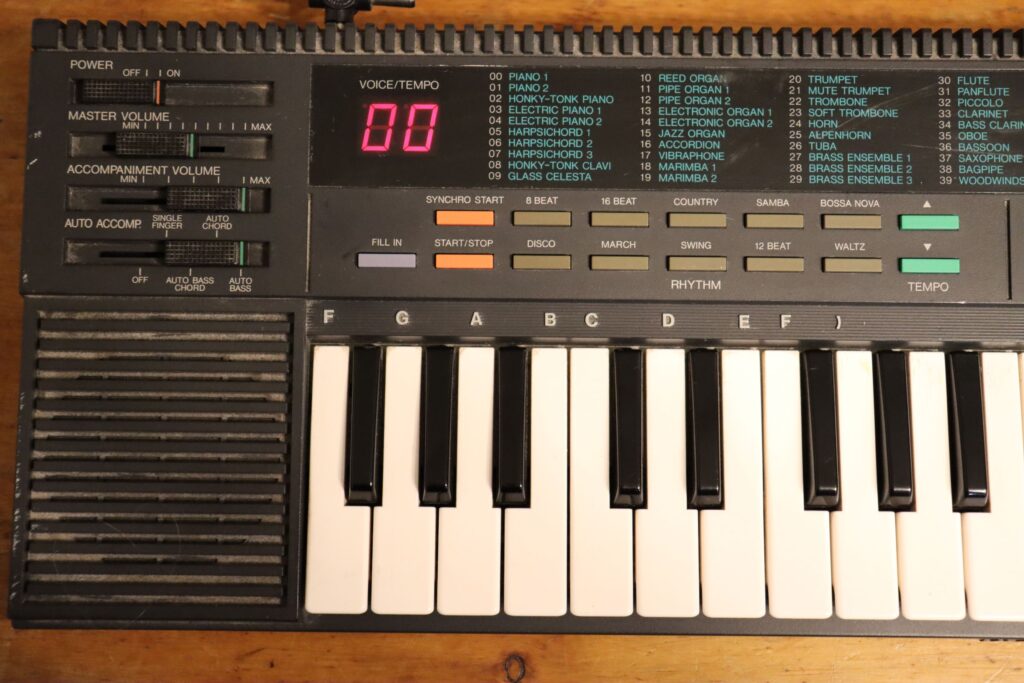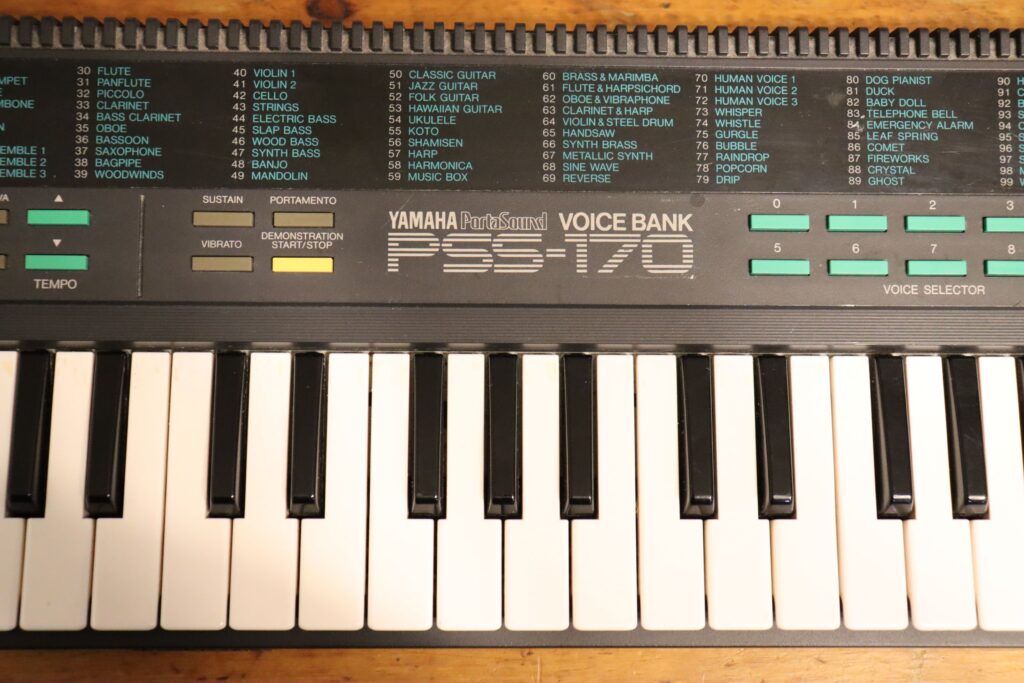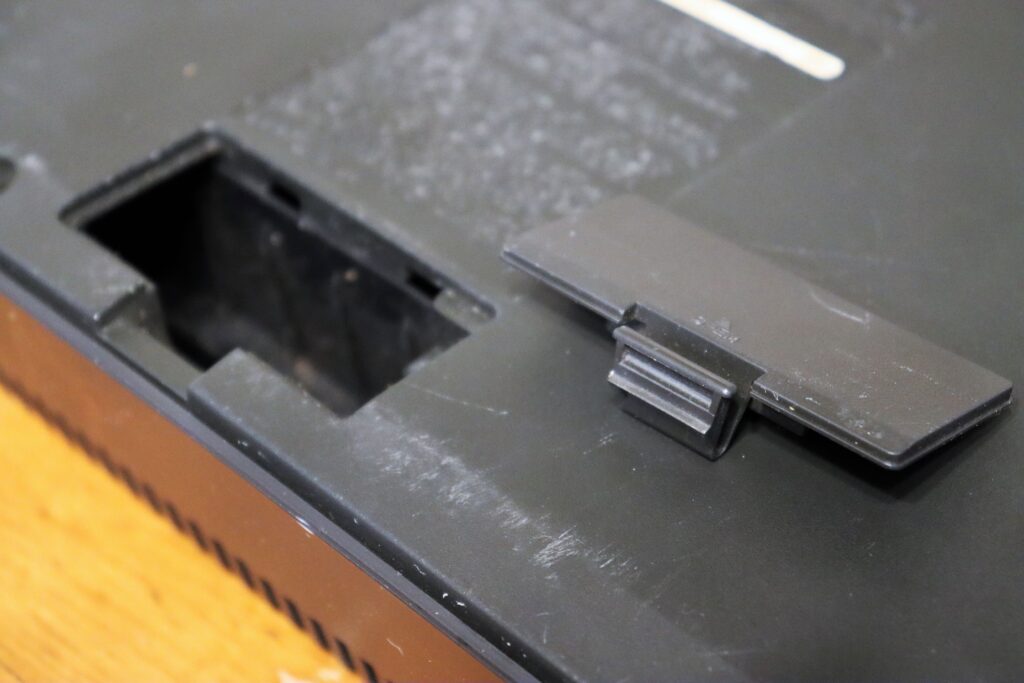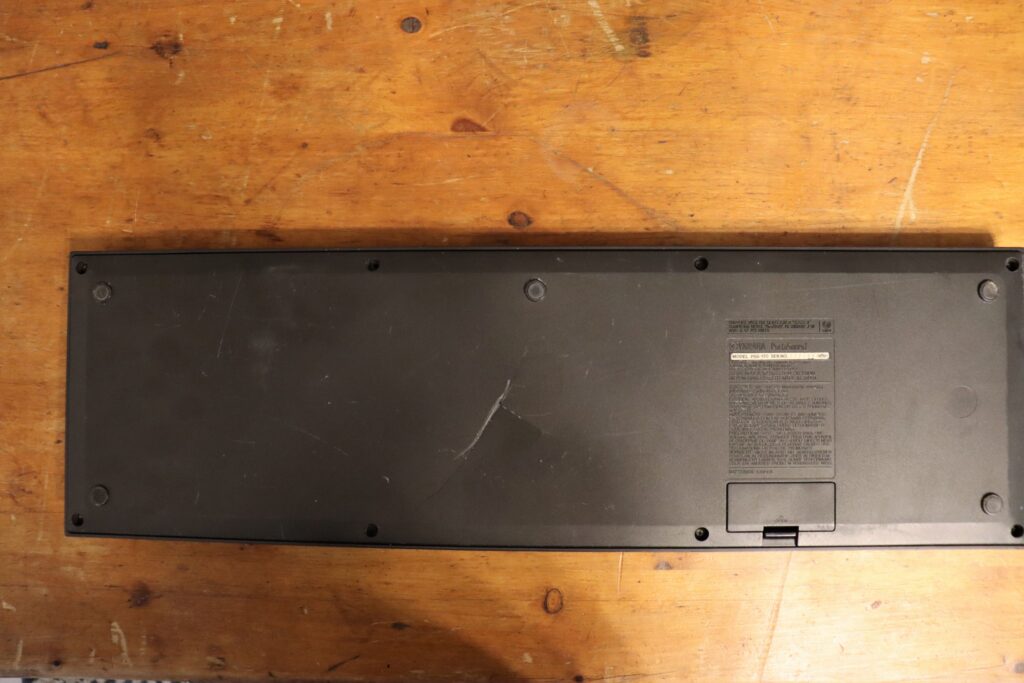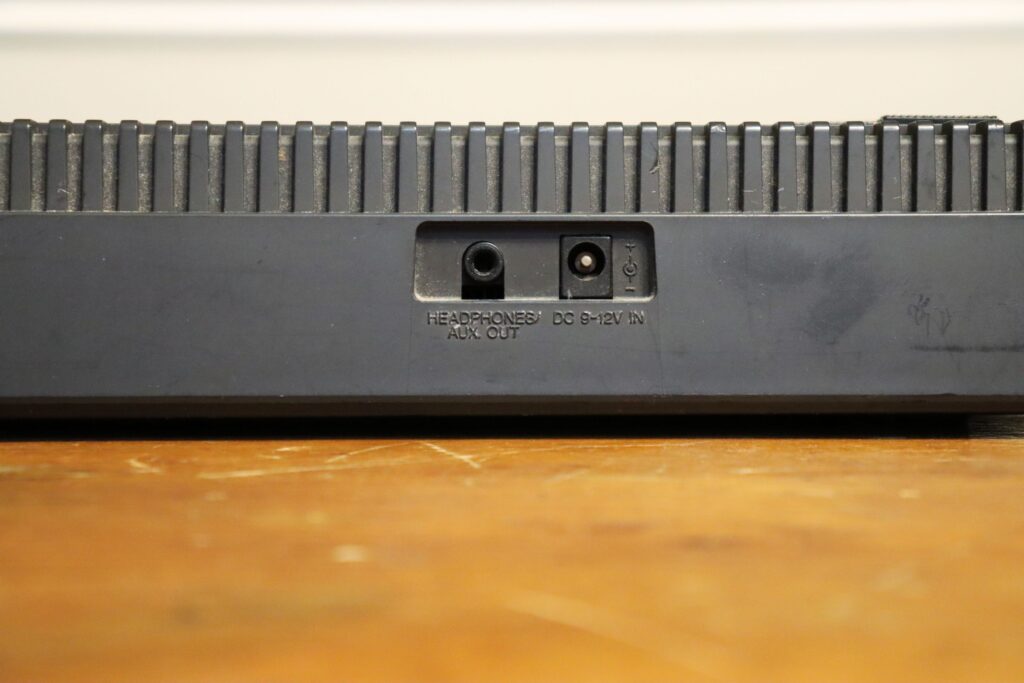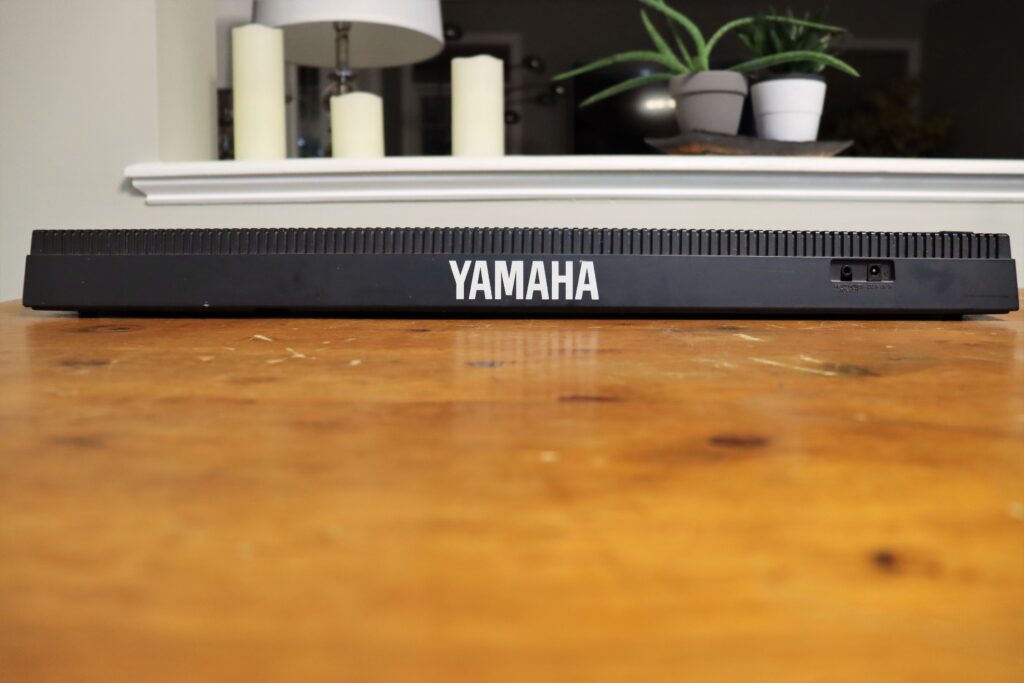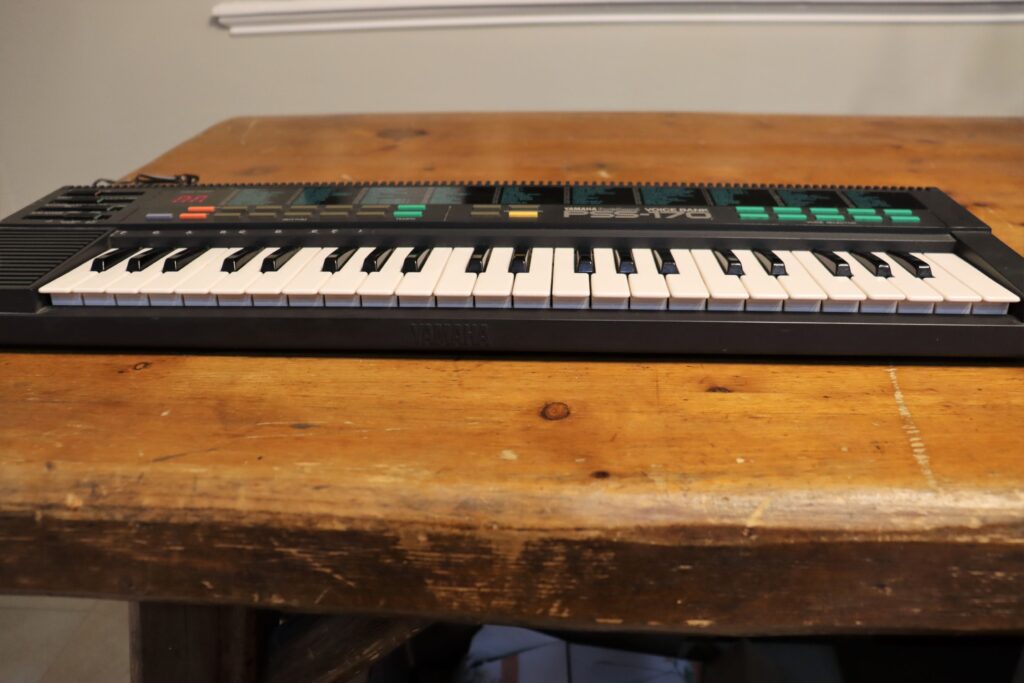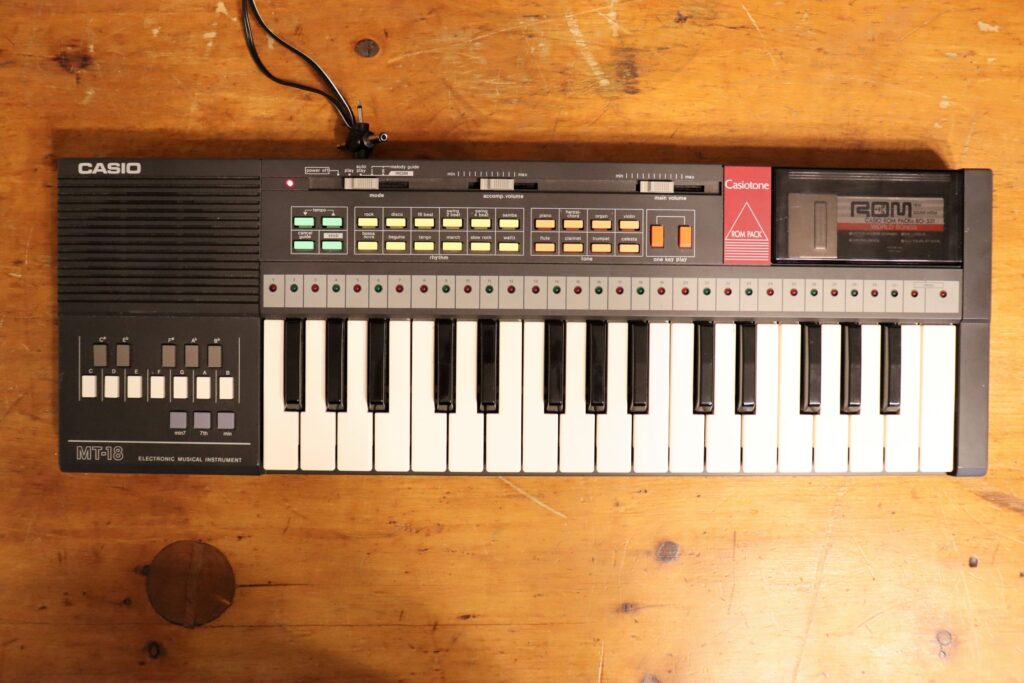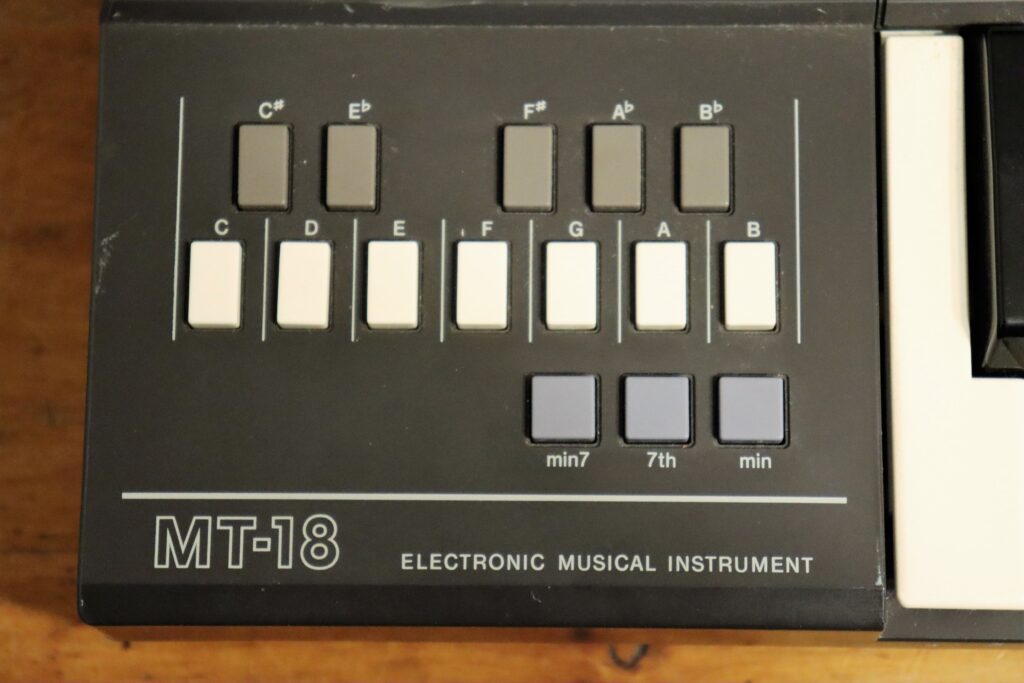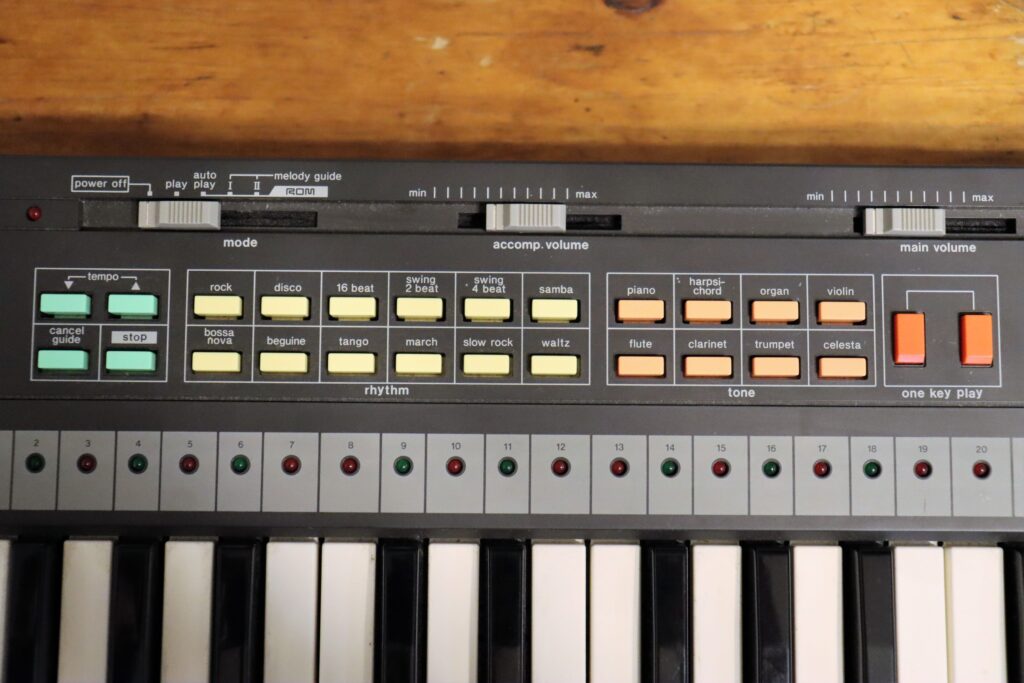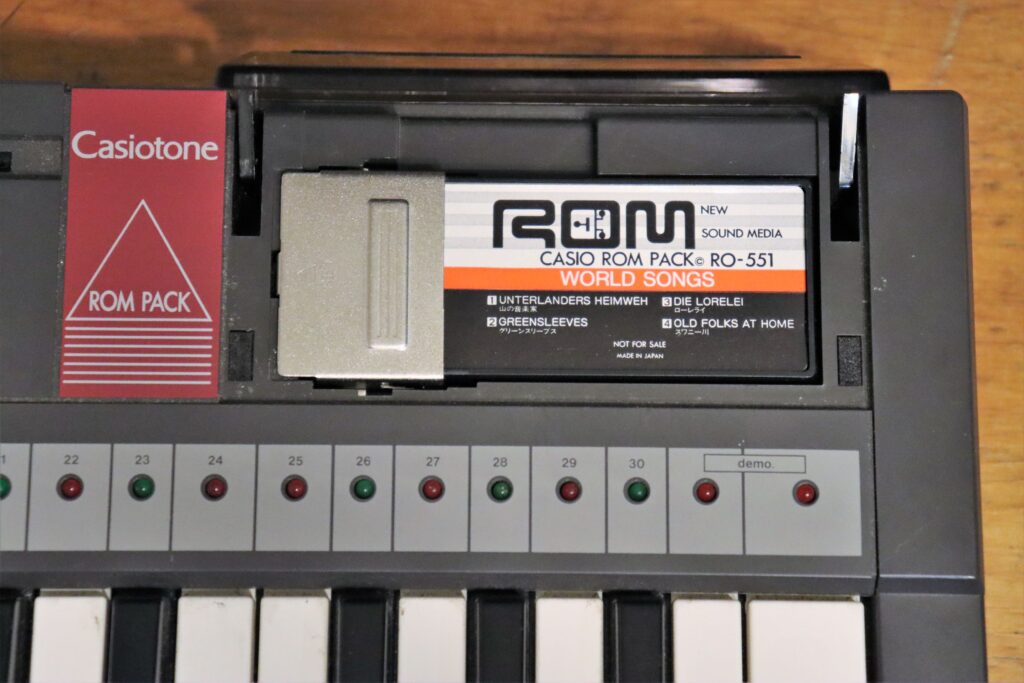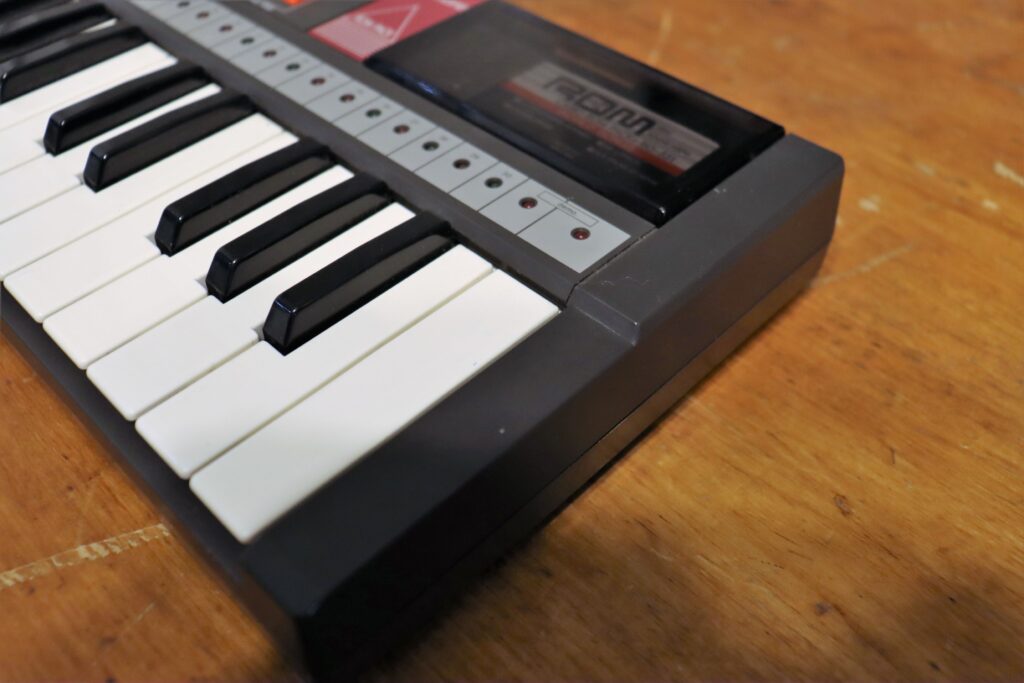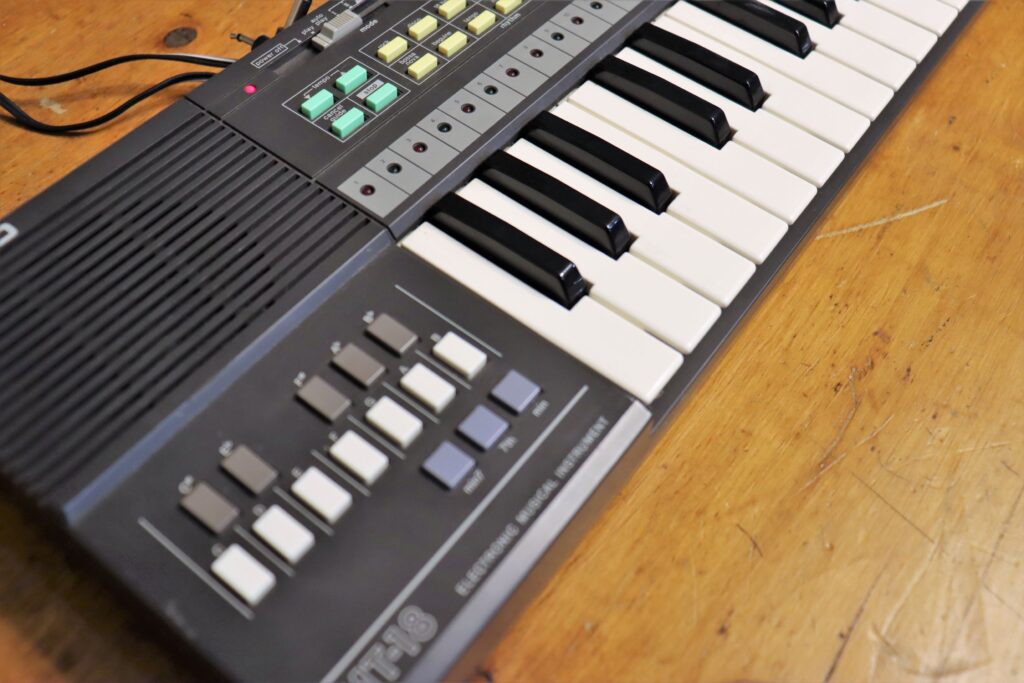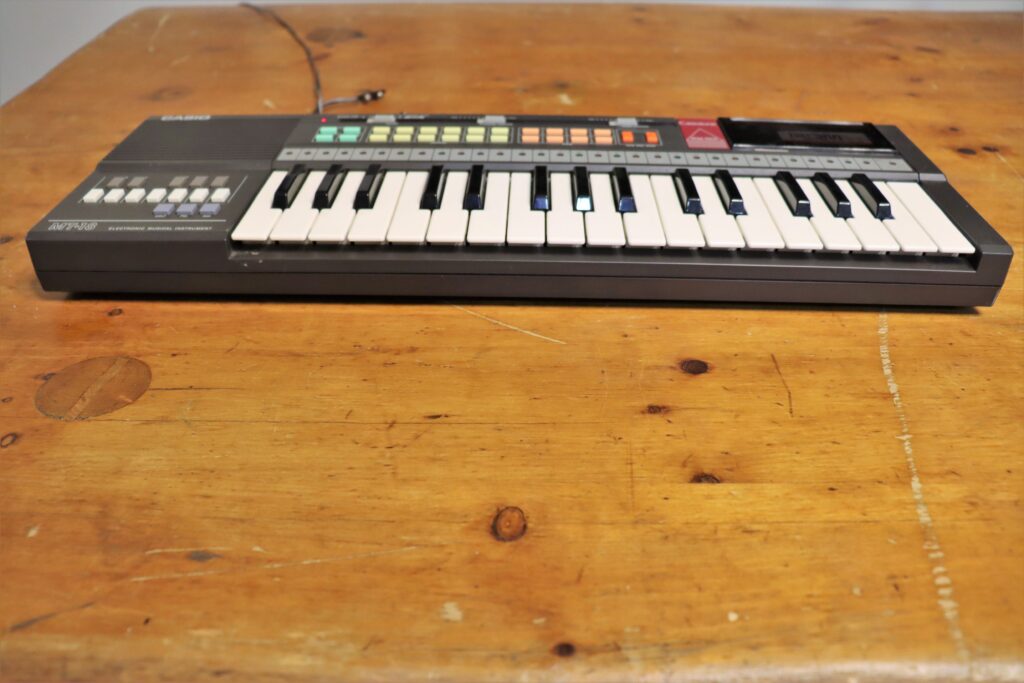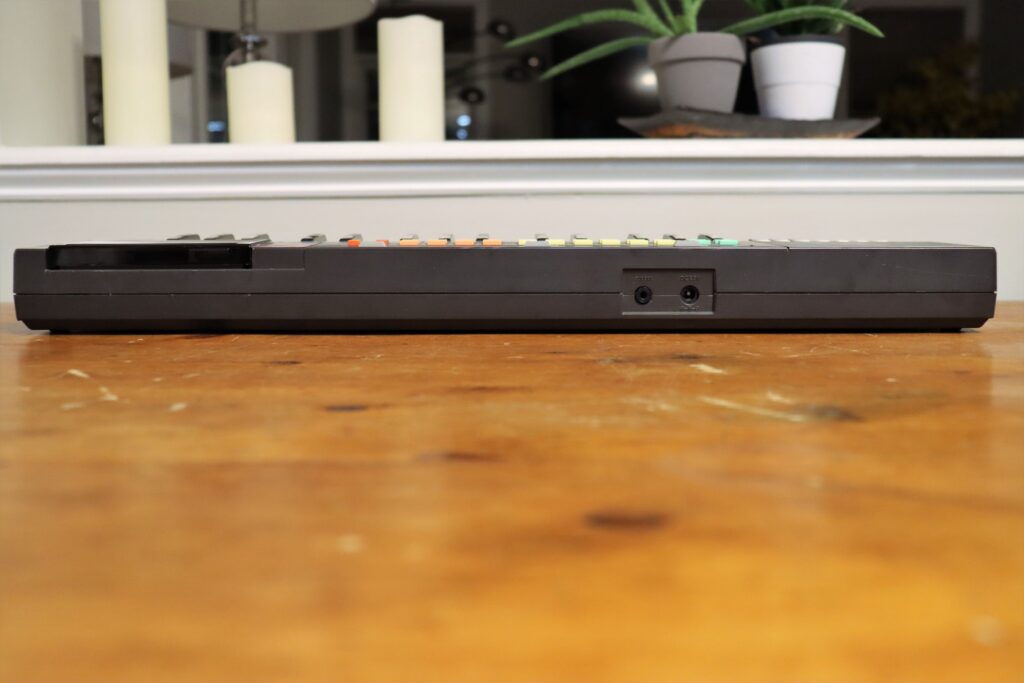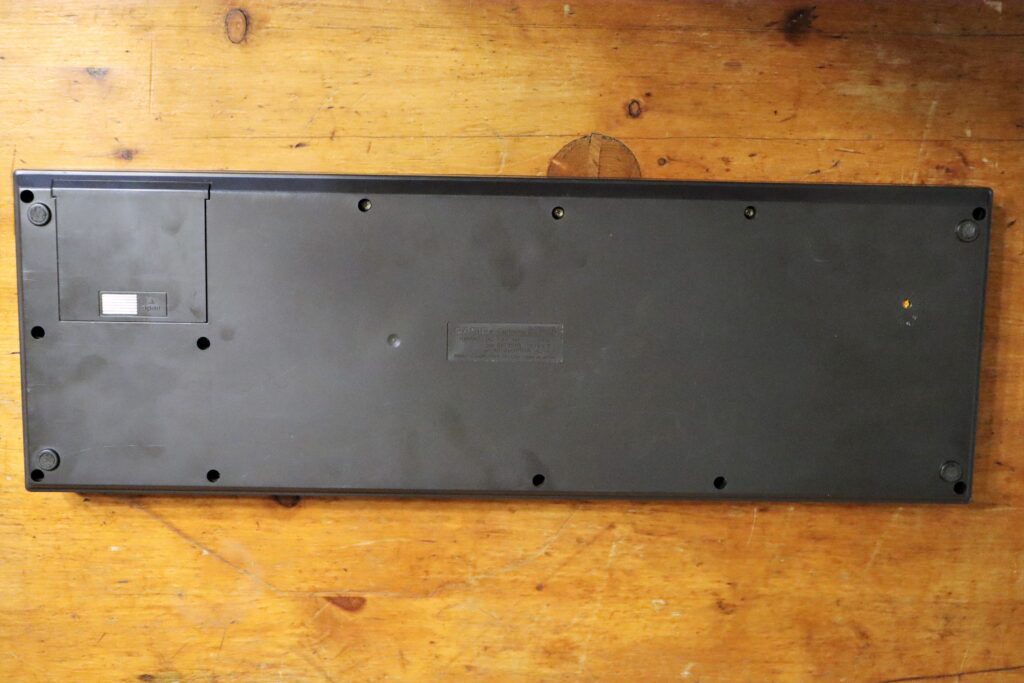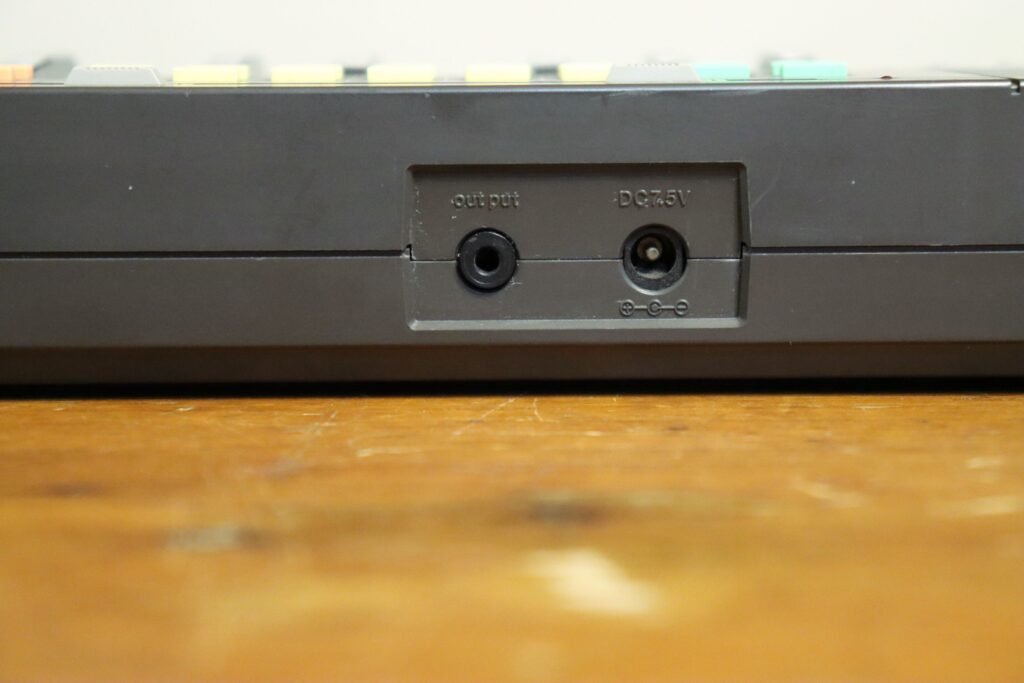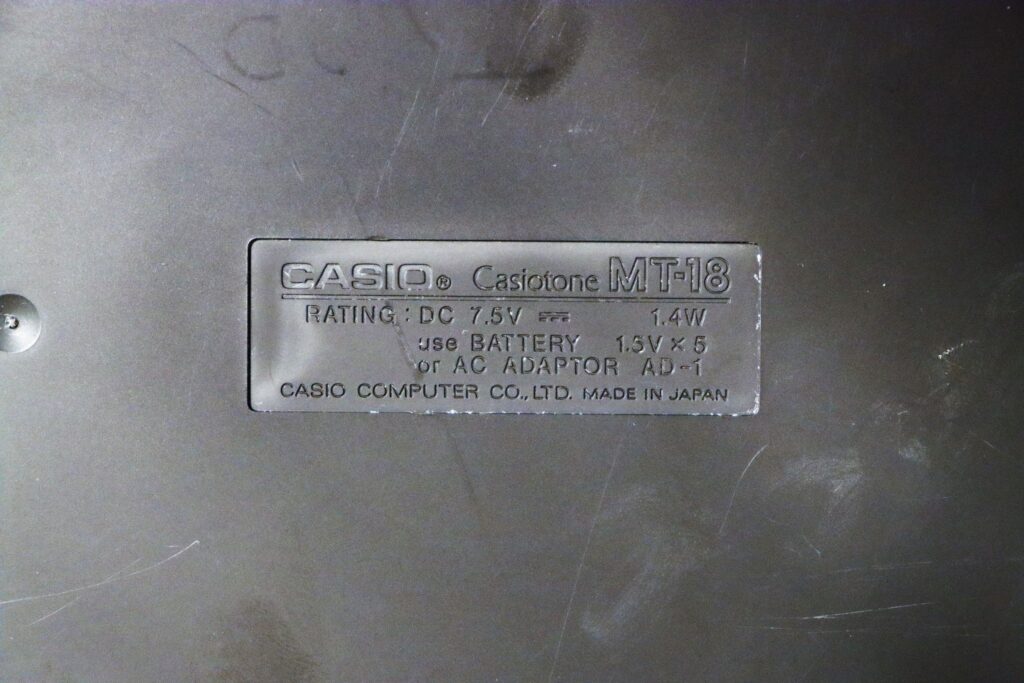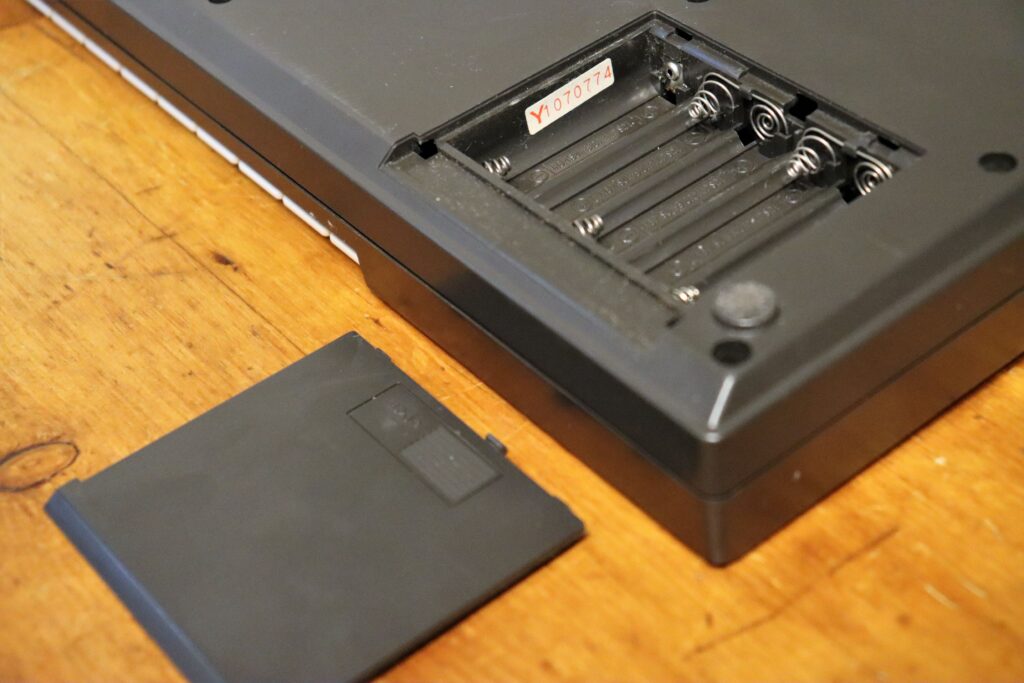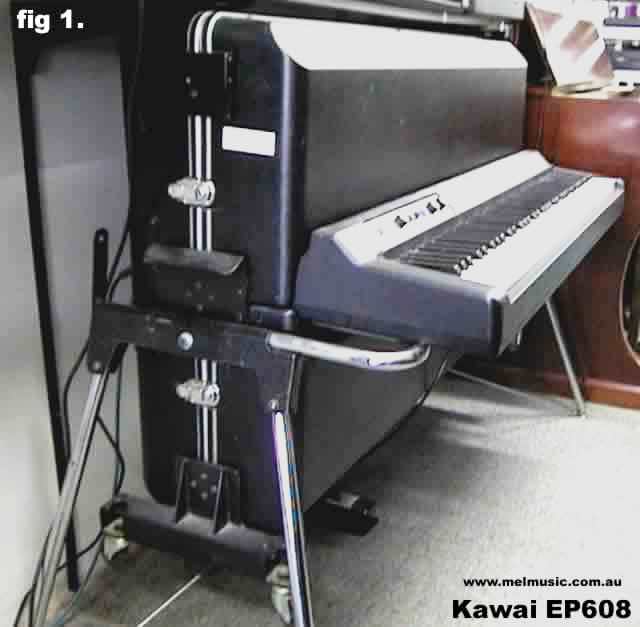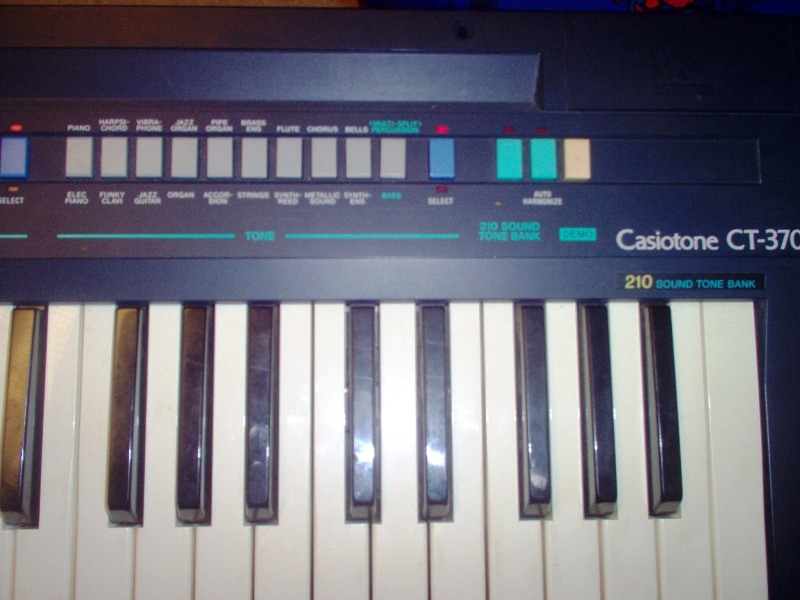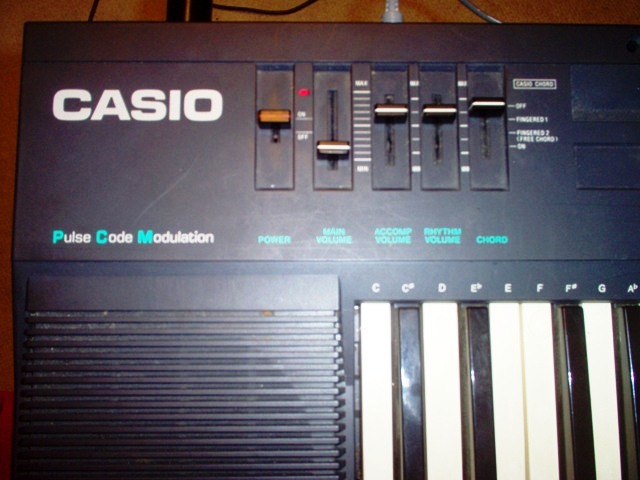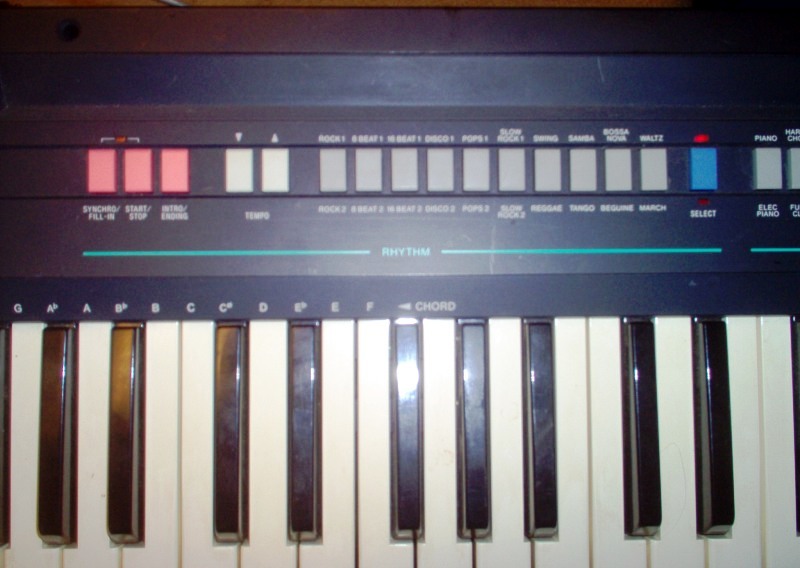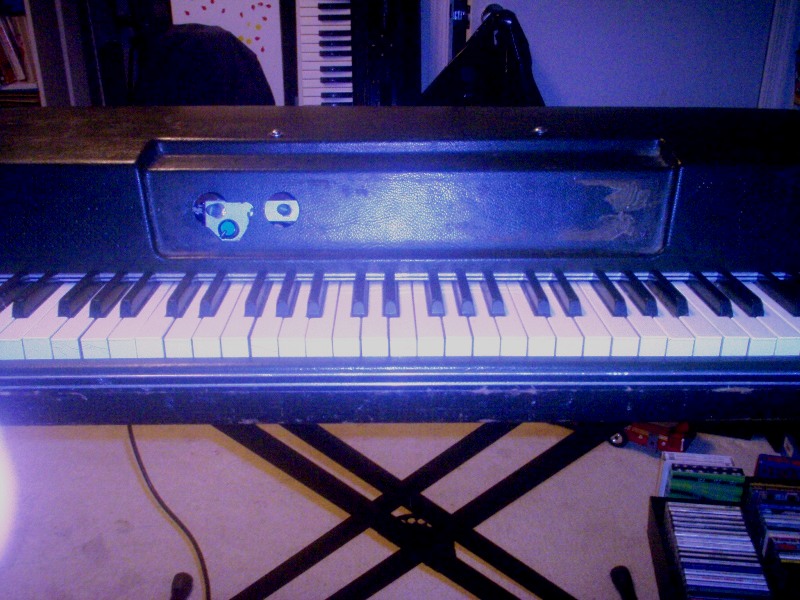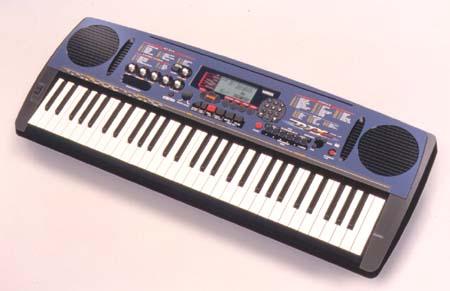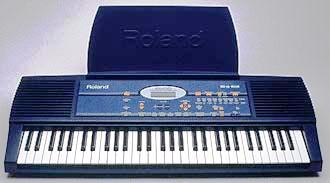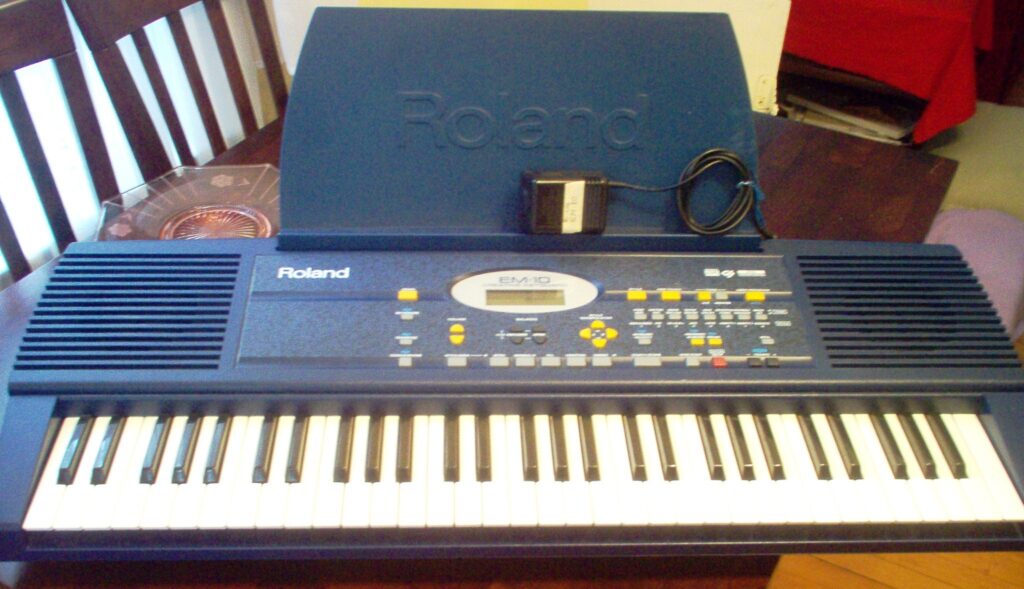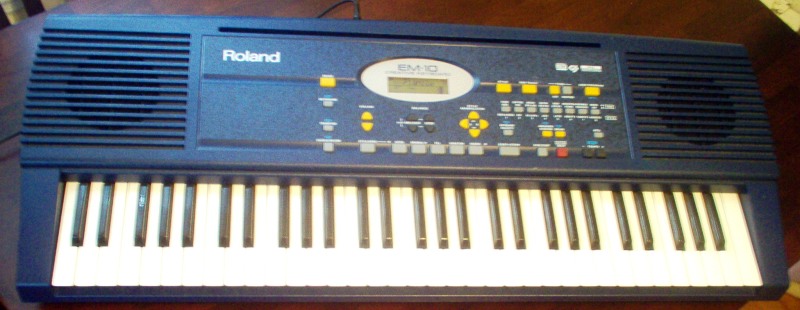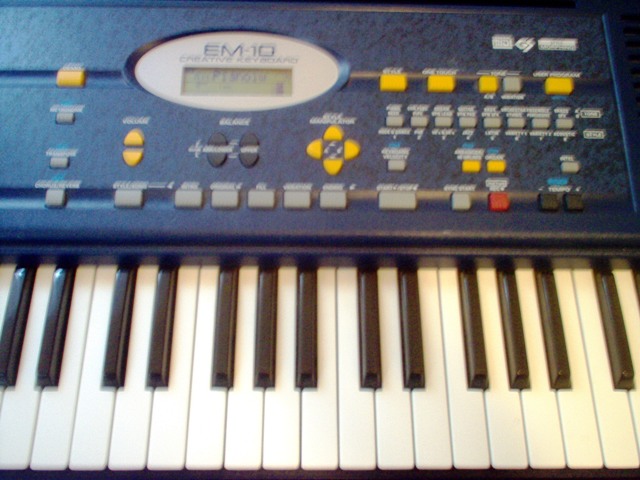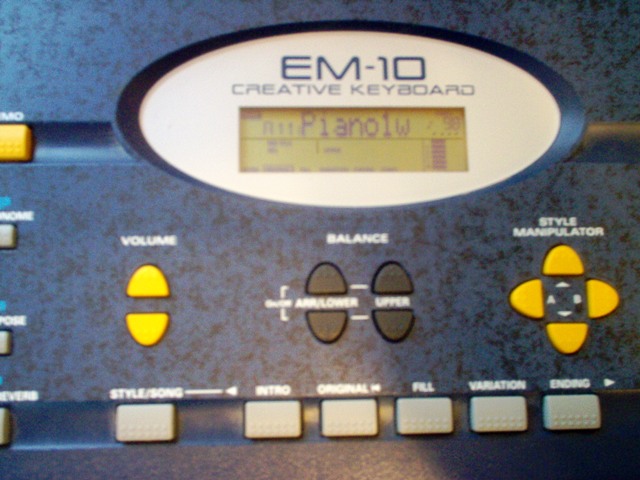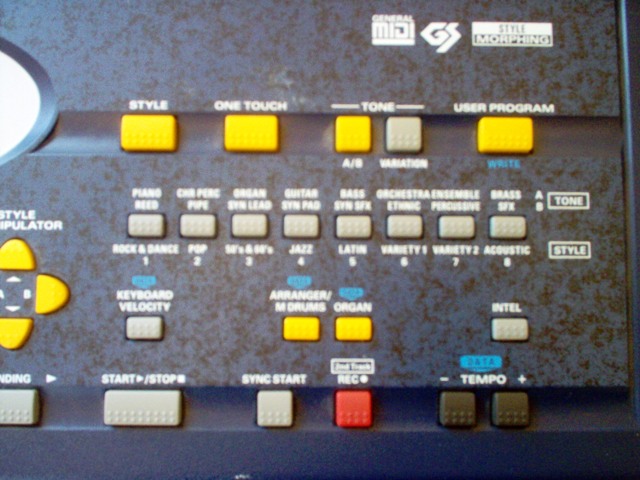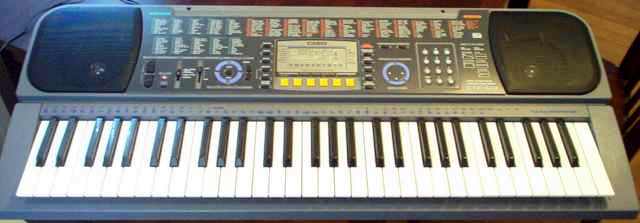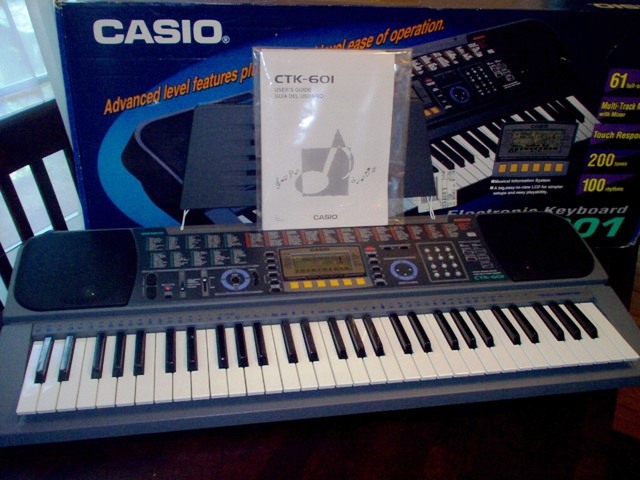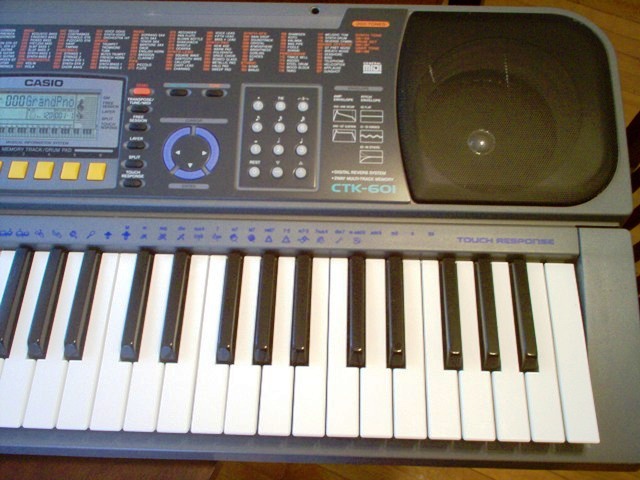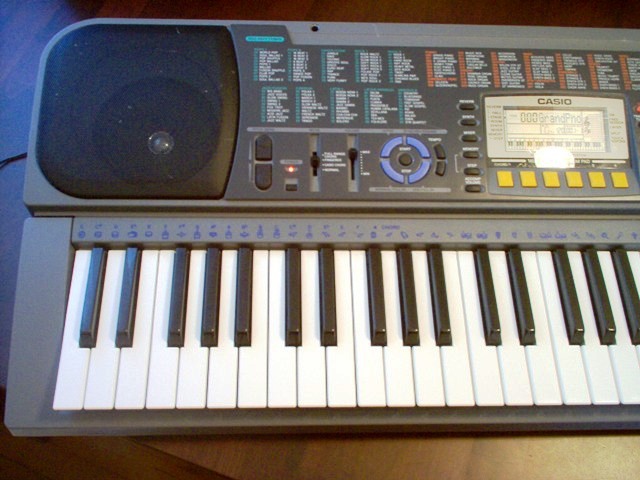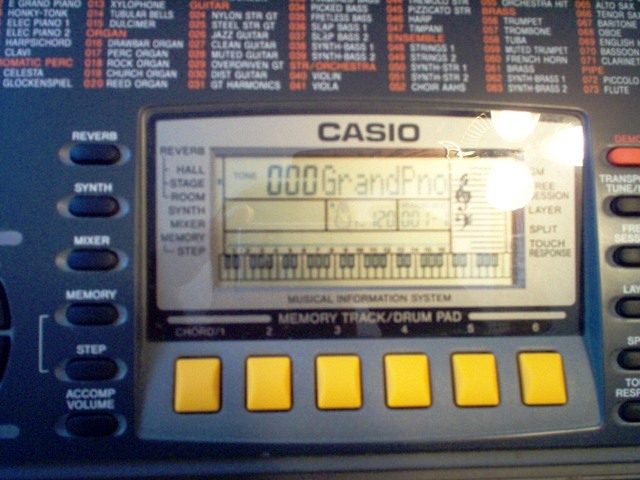Analog Accompaniment Keyboard
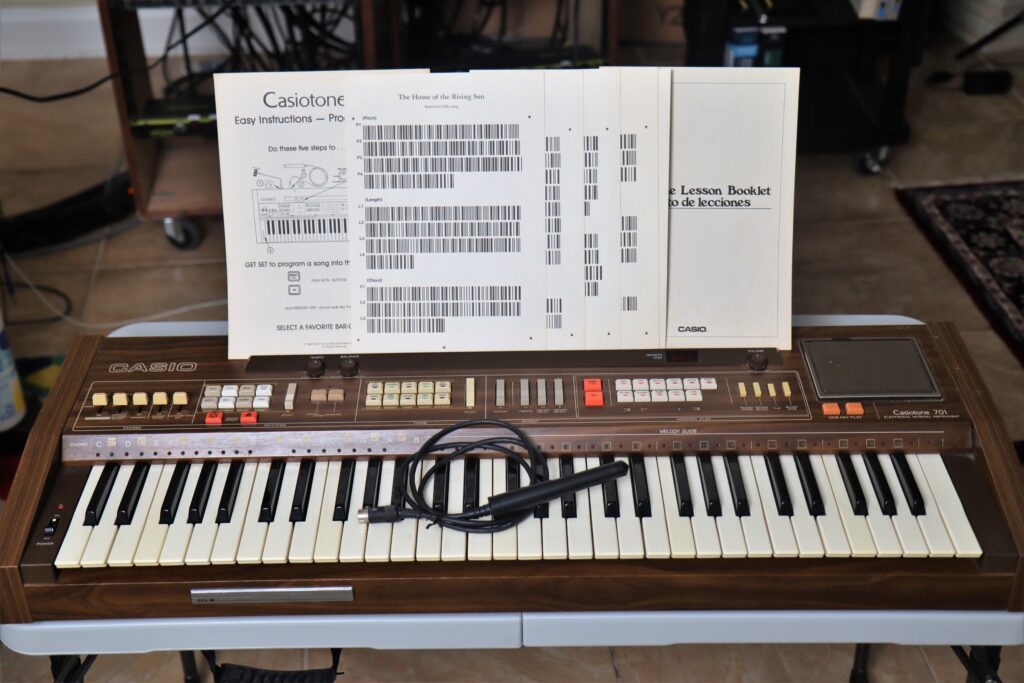
Vintage, classic analog accompaniment keyboard from the early 1980s that features voices, drums, Casio auto-accompaniments, and the unusual ability to read bar code charts to play back songs and arrangements.
Casio Casiotone 701 audio demos
Casio Casiotone 701 photos
Casio Casiotone 701 manuals
Casio Casiotone 701 Bar Codes
Casio Casiotone 701 specs
| Year of release | 1981 |
| Sound generation method | analog |
| Number of keys | 61 keys (5 octaves) |
| Polyphony | 8-note |
| Preset Sounds | 20 (Pipe Organ, Briliant Organ, Diapason, Wood Wind, Tibia, Full Tibias, Flute, Piccolo, Jazz Organ 1, Jazz Organ 2, Piano, Electric Piano, Vibraphone, Marimba, Celesta, Chime, Oboe, Bassoon, Funky and Wah Brass) |
| Sound Effects | Sustain, Vibrato (4 types) and 2 types of Electronic Sound Effects |
| Built-in rhythms | 16 (Rock, Rock’n’Roll, Disco, Slow Rock, Swing 1, Swing 2, Bossa Nova, Samba, March, Boogie, Waltz, Jazz Waltz, Rhumba, Beguine, Tango and Mambo, with Start/Stop, Synchro Start, Tempo Control, Balance Control, Tempo Indicator and 10 kind of “FILL-INs” |
| Auto-accompaniment | Casio Chord switch (fingered/on), Accompaniment variation selectors (bass & chord), Accompaniment volume |
| Responds to velocity | no |
| Aftertouch | no |
| Display | yes |
| MIDI | no |
| Sound expansion capabilities | no |
| Sequencer | no |
| Arpeggiator | yes |
| Memory Play Functions | Manual and MS memories (storing methods) Note storage capacity: Max 345 steps Chord storage capacity: Max 201 steps |
| Controls | buttons, sliders |
| Accessories | AC power cord, score holder, MS-1, Lesson Booklet, 3 AA size manganese dry batteries (loaded at the factory), polish cloth and dust cover. |
| Built-in speaker | 10 cm (4″) dia. x 1 |
| Outputs | Output impedance: 5.0kOhm Output voltage: High/2.1 V max; Low/0.2V max |
| Power consumption | 29 W |
| Dimensions | 127.5mm H x 958mm W x 341.5mm D (5″H x 37-3/4″W x 13-7/16″ D) including projections |
| Weight | 12.5 kgs (27.6 lbs) |
